Contents
Hilo | Intro
In the various regions of Hawaii's Big Island, Hilo on the east coast is the second busiest city. The main reason for this is its proximity to the Hawaii Volcanoes National Park and the presence of an airport, which attracts many visitors who take day trips to the Big Island or have short stays on the island.
We spent nearly two days in Hilo. On the first day, after coming down from the Hawaii Volcanoes National Park, we visited several attractions in the Wailuku River State Park and enjoyed the view at the Hilo Bayfront Beach Park. The next morning, we explored the market and small shops along Hilo Bayfront before driving north along the scenic route to Akaka Falls. Compared to the livelier Kona, Hilo feels quieter and less like a tourist city. There aren't many hotel options, and it's known as one of the wettest cities in the United States, with rain almost every day. However, Hilo boasts a plethora of delicious food options (which I'll discuss in another article), and the overall atmosphere of the town reminds me of the less crowded days in Kenting during my childhood. To the west of Hilo lies the Wailuku River State Park, and to the north is the Akaka Falls State Park. After witnessing the unique sights of the Hawaii Volcanoes National Park and enjoying the sunny beaches of Kona, Hilo and its surrounding attractions offered us a completely different scenery.
Find a stay in Hilo?
Hilo Bayfront
The liveliest area of downtown Hilo is probably near Bayfront, which is close to the hotels. Along Kamehameha Avenue, facing Hilo Bay, there are many interesting shops and markets. Just across the street is the Hilo Bayfront Beach Park, which is the heart of downtown Hilo. Before heading out to explore the attractions around Hilo, it's a good idea to spend some time walking around and exploring this area.
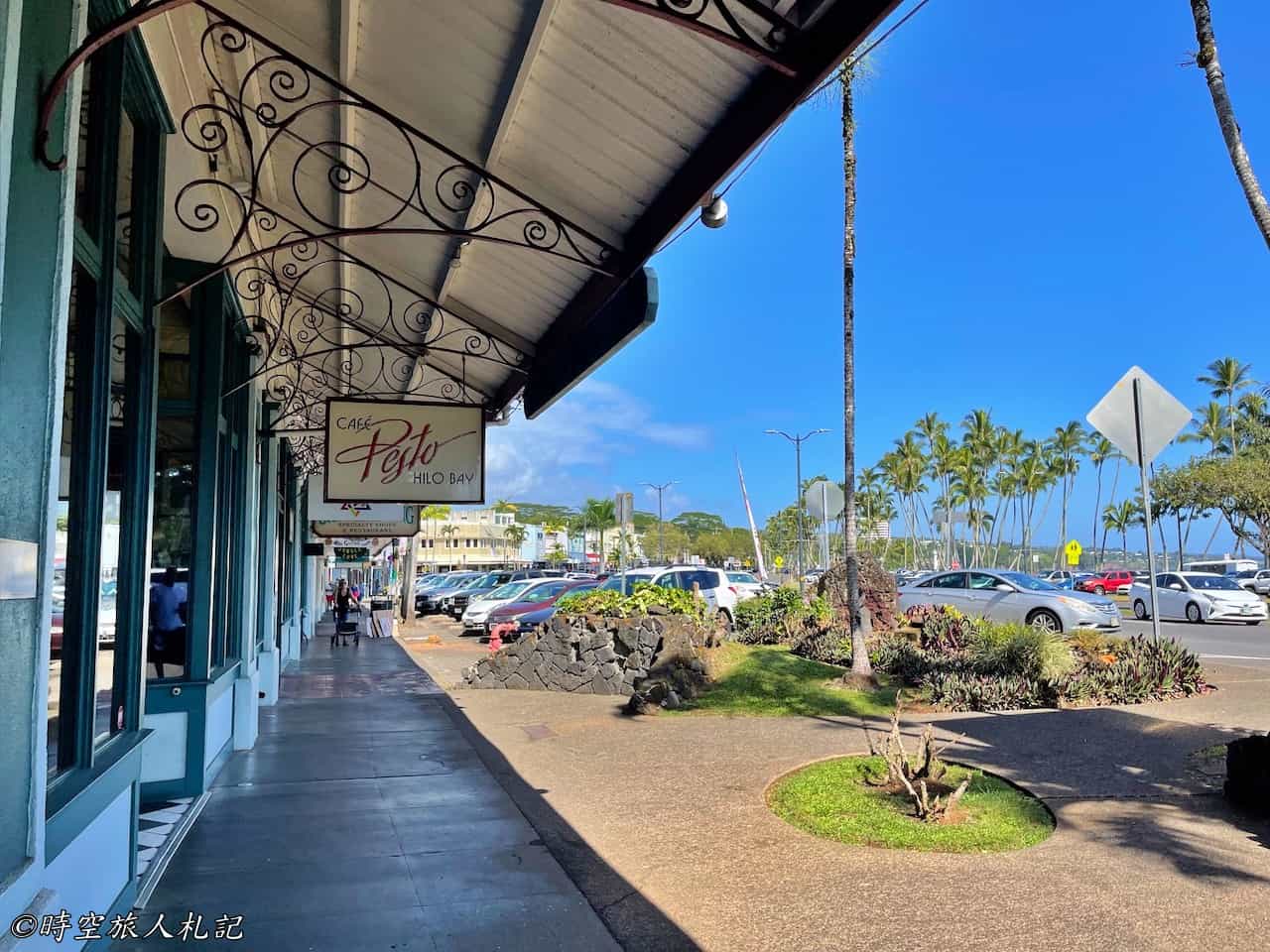
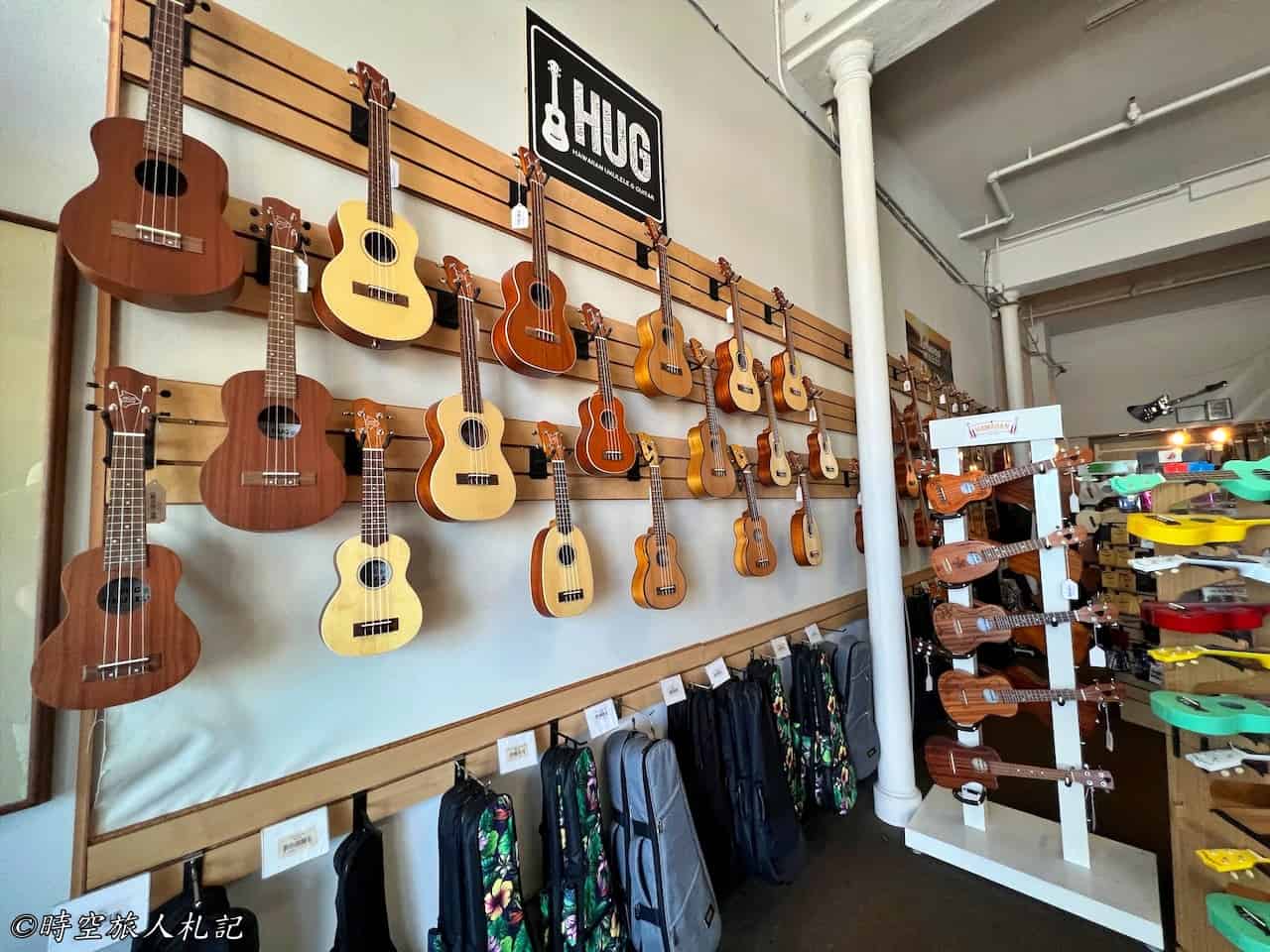
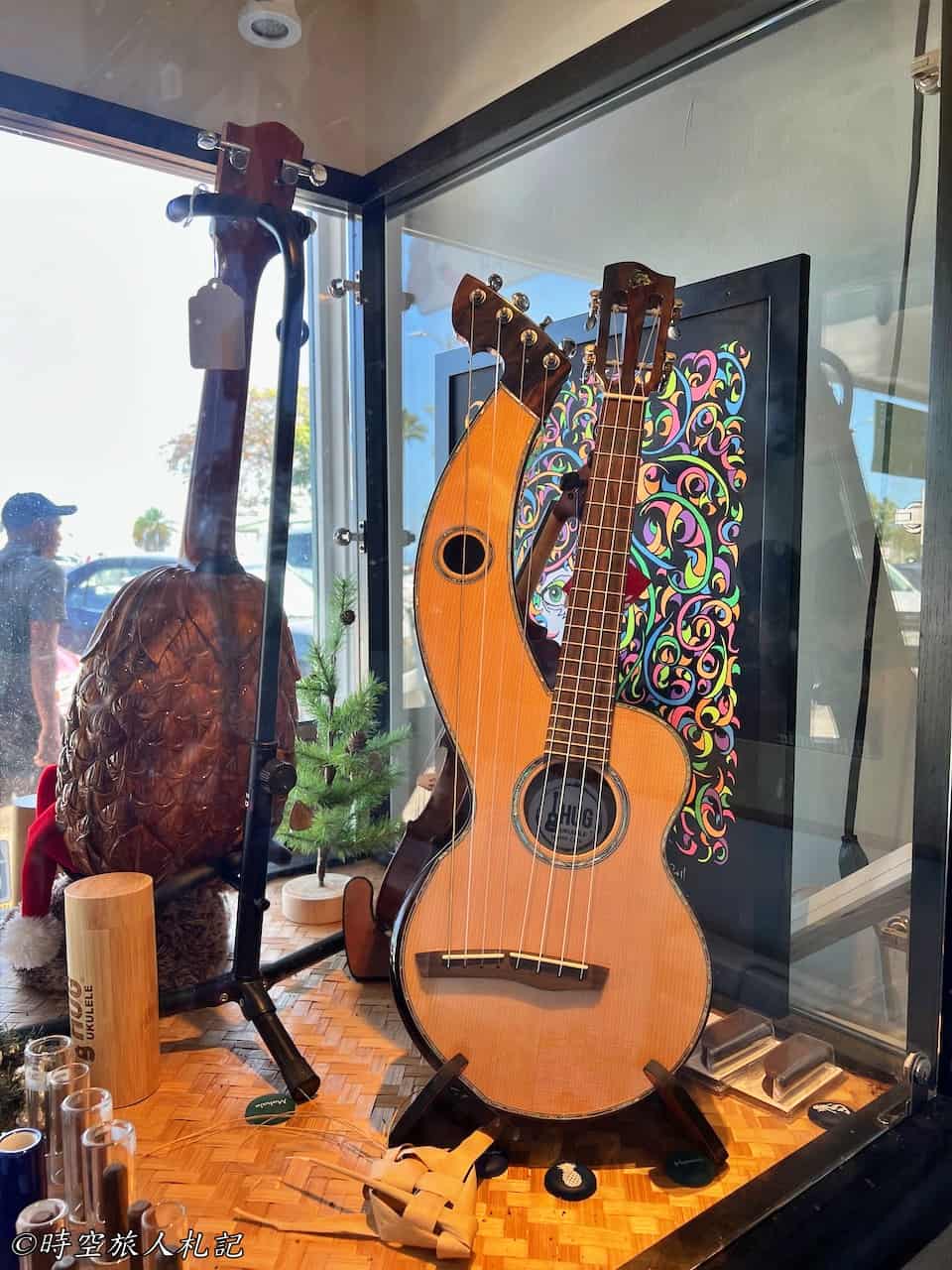
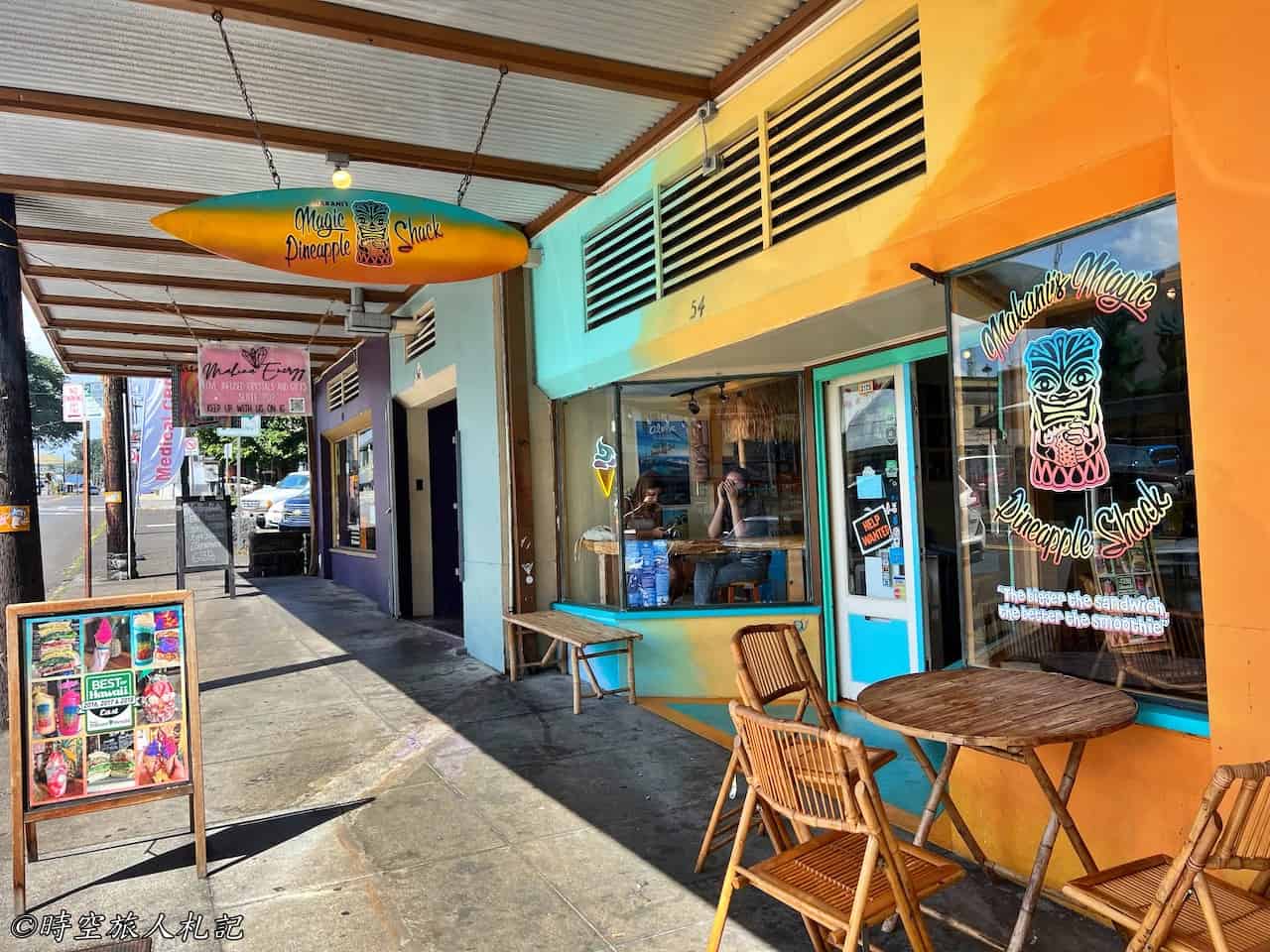
Hilo Bayfront Beach Park
Within the Hilo Bayfront Beach Park area, the coastline stretches for nearly 1 kilometer. In the past, it used to be entirely covered in black sand, but it's no longer the case. The seawater in this area has been polluted due to industrial development in the mid-20th century, although efforts have been made by the government in recent years to protect it, it's still not as suitable for swimming or snorkeling as Kona. However, despite this, the ocean views are still quite pleasant, and the greenery is well-maintained. One could consider it as the central park of the Big Island.
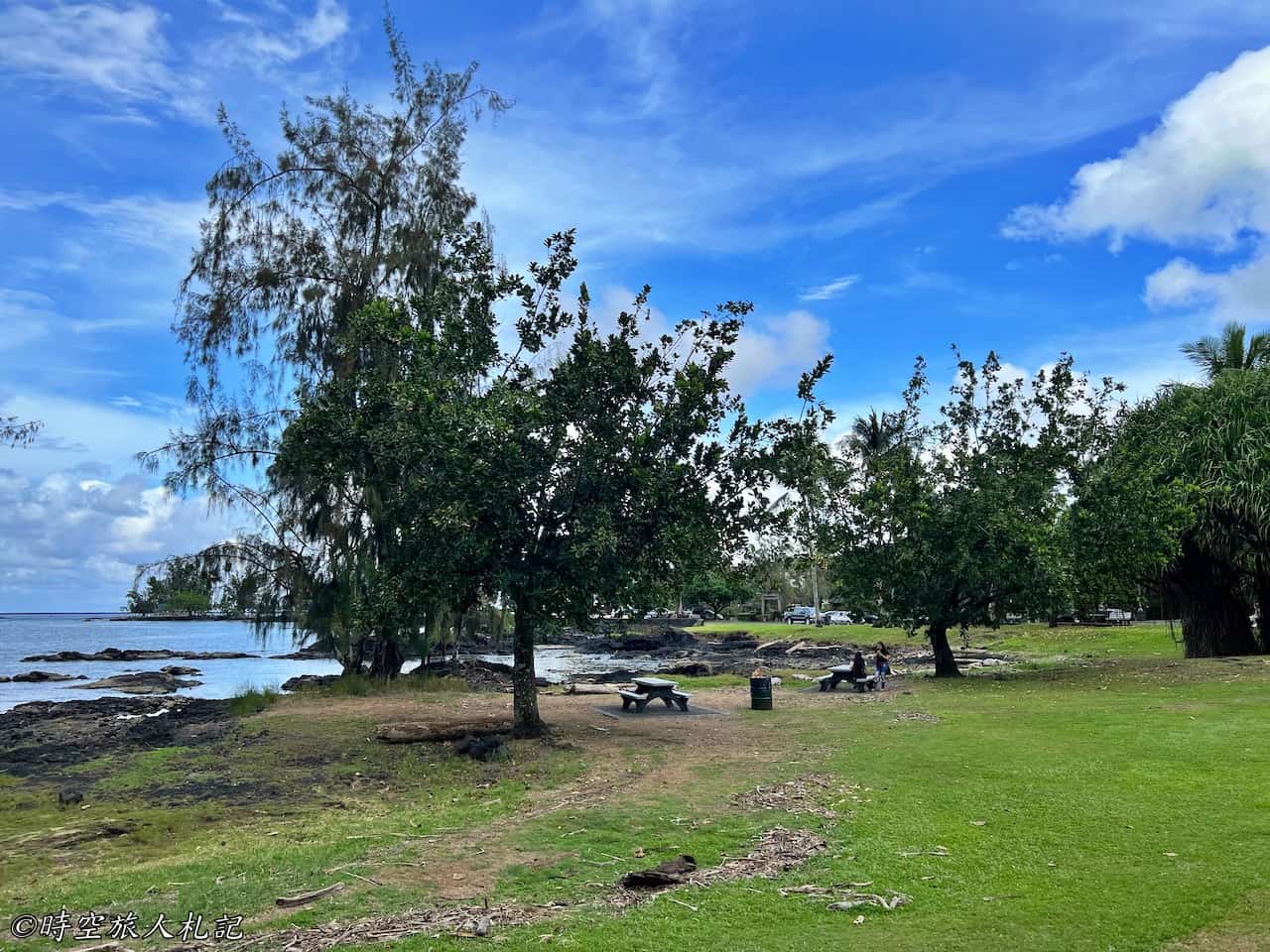
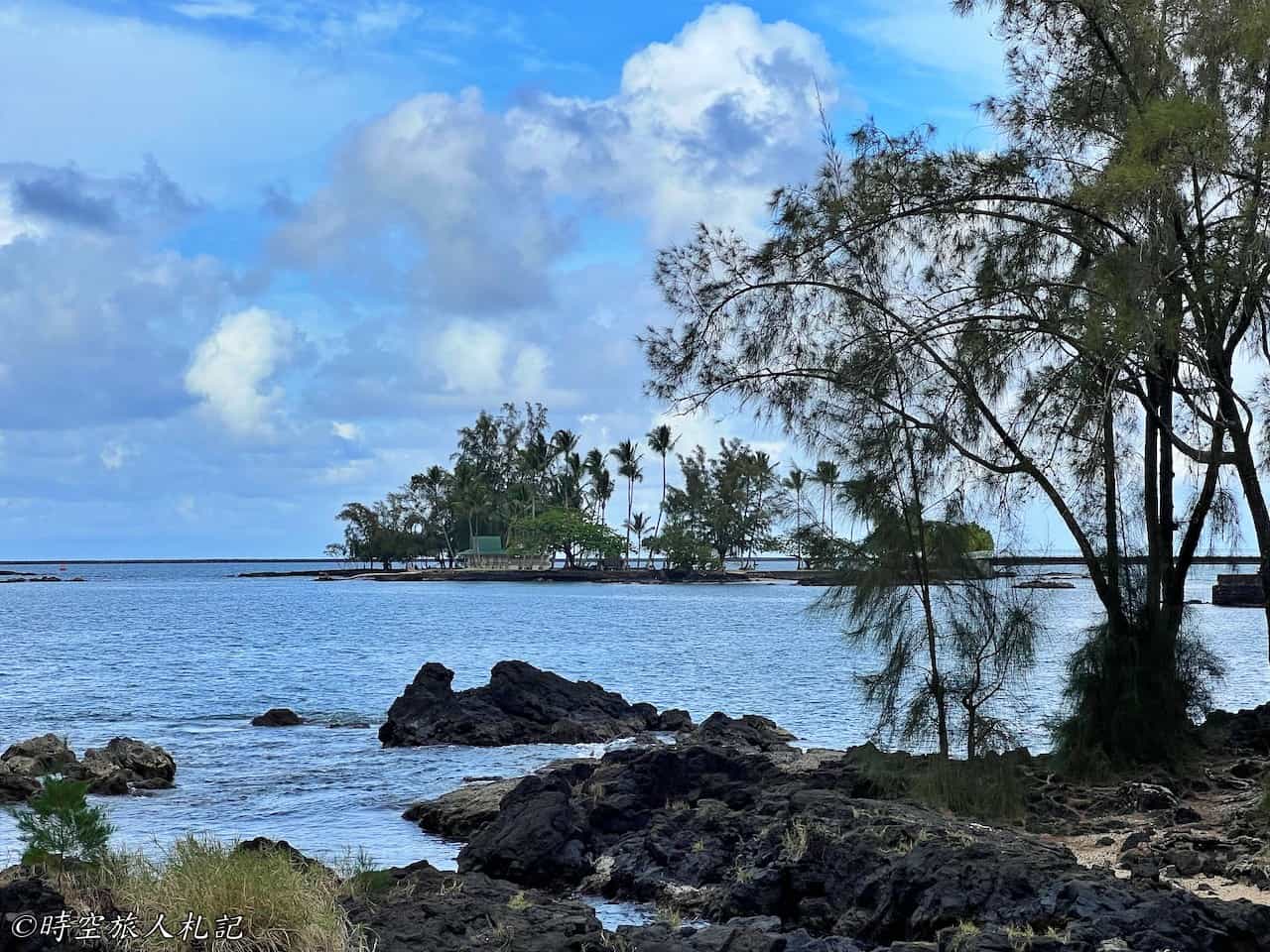
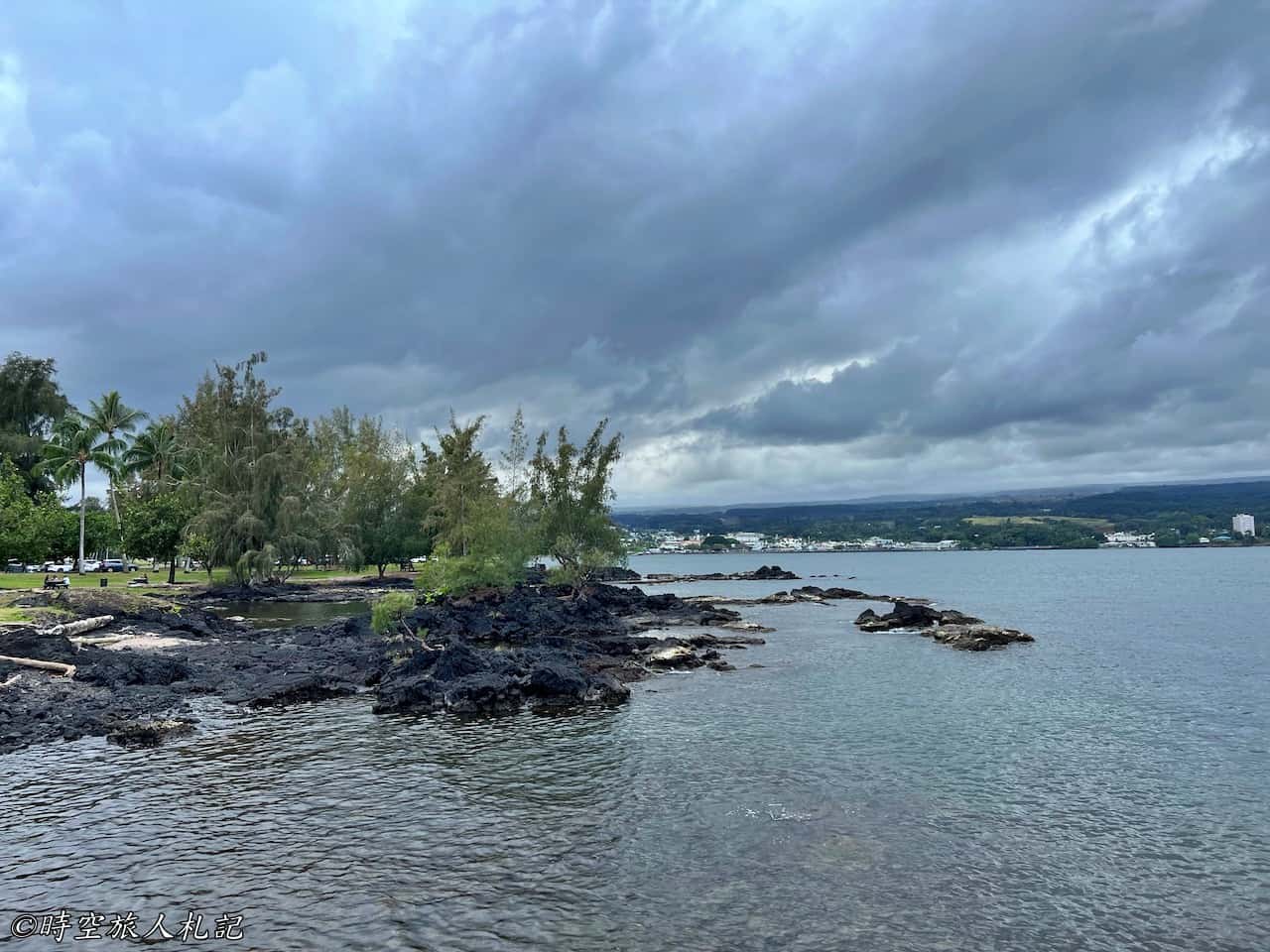
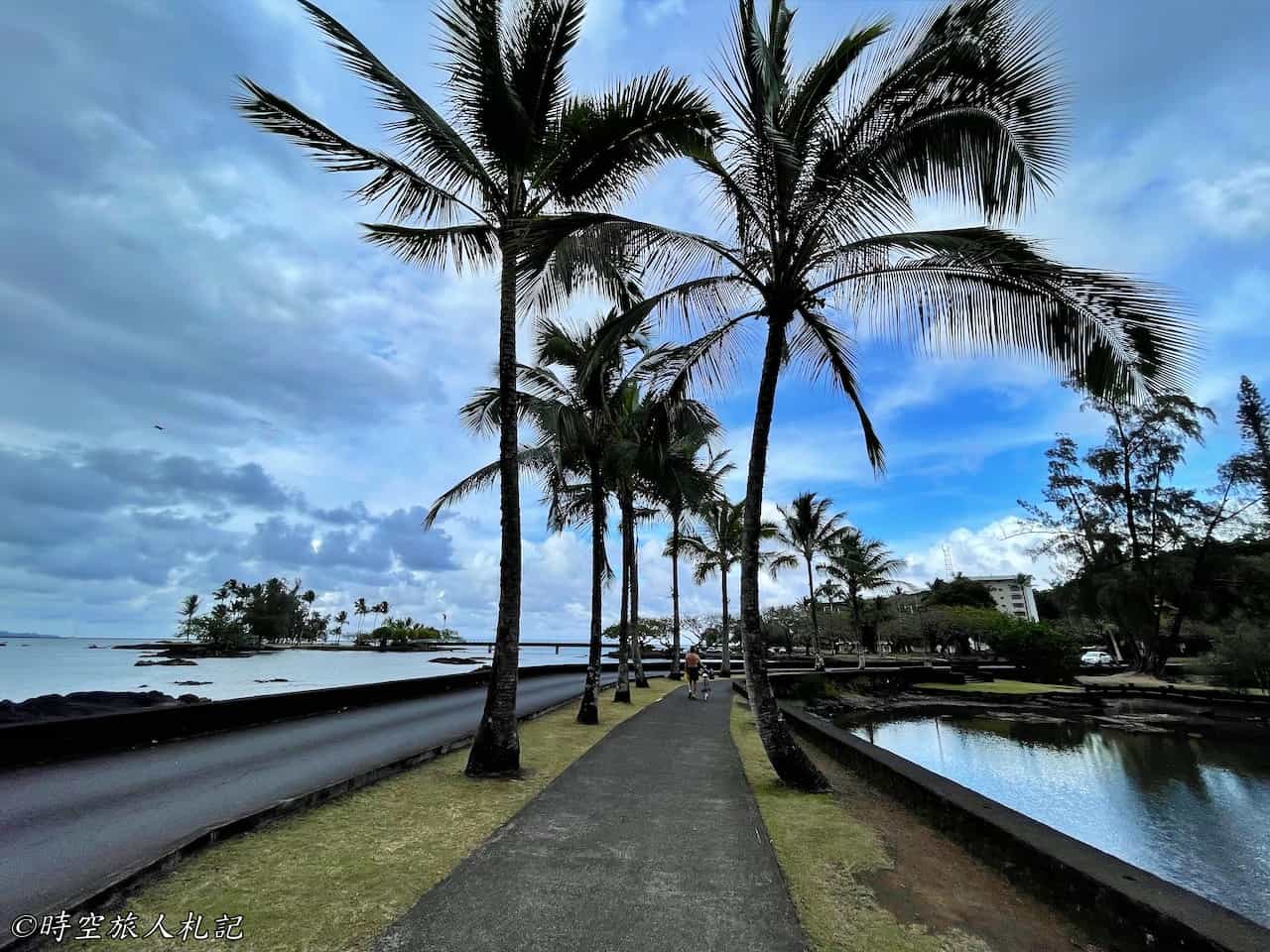

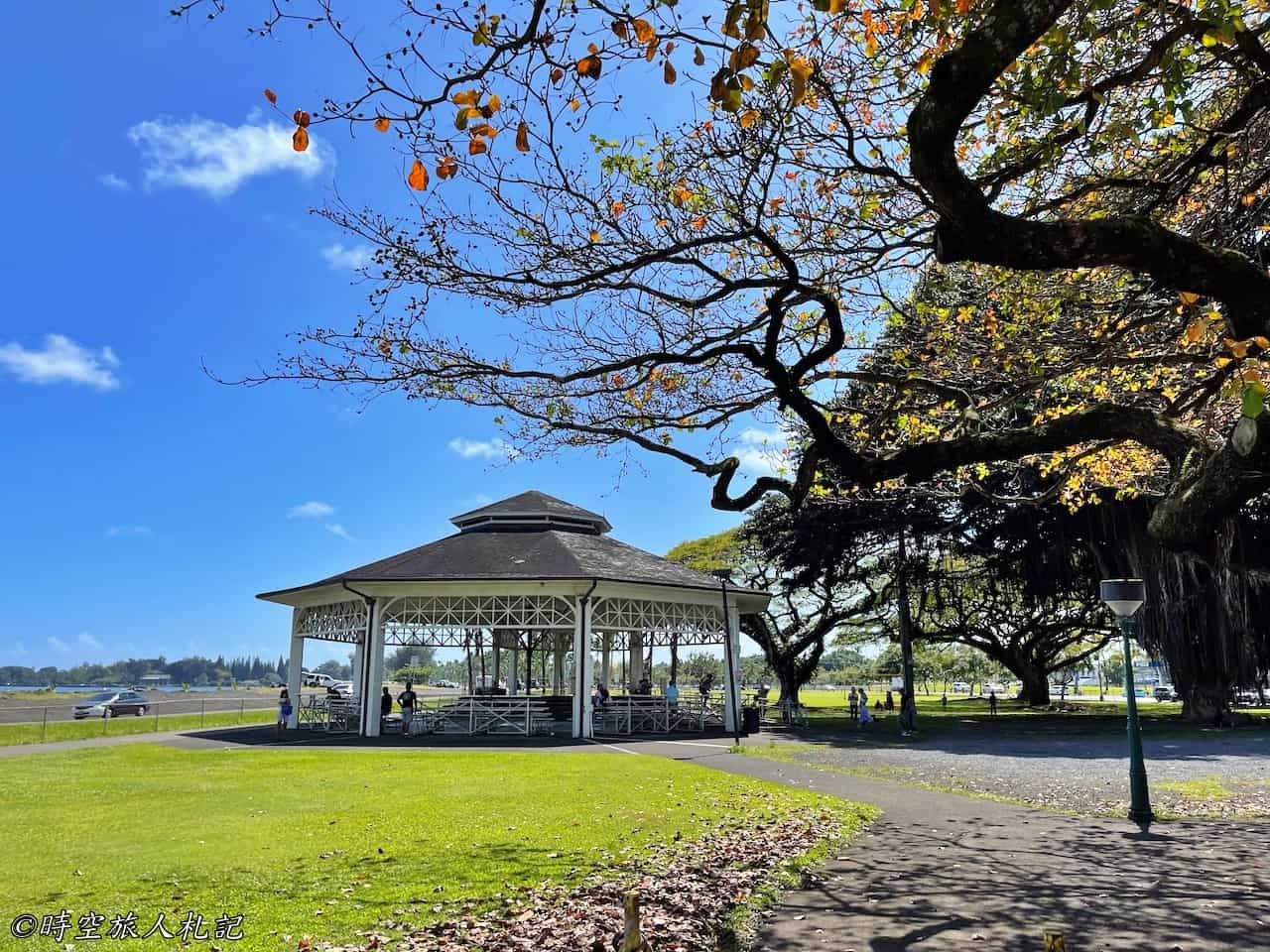
Liliuokalani Garden
Liliuokalani Garden is located just across the beach and is a very large Japanese-style garden. It is named after Queen Liliuokalani, the last monarch of the Kingdom of Hawaii, and was dedicated in 1917 to the first generation of Japanese immigrants who came to work in the sugarcane fields on the Big Island. When we visited, there weren't many people around, mostly locals taking walks or meditating. The garden is beautifully designed with plenty of greenery, but it doesn't have the meticulous grooming typically seen in traditional Japanese gardens; instead, it has a more rugged aesthetic.
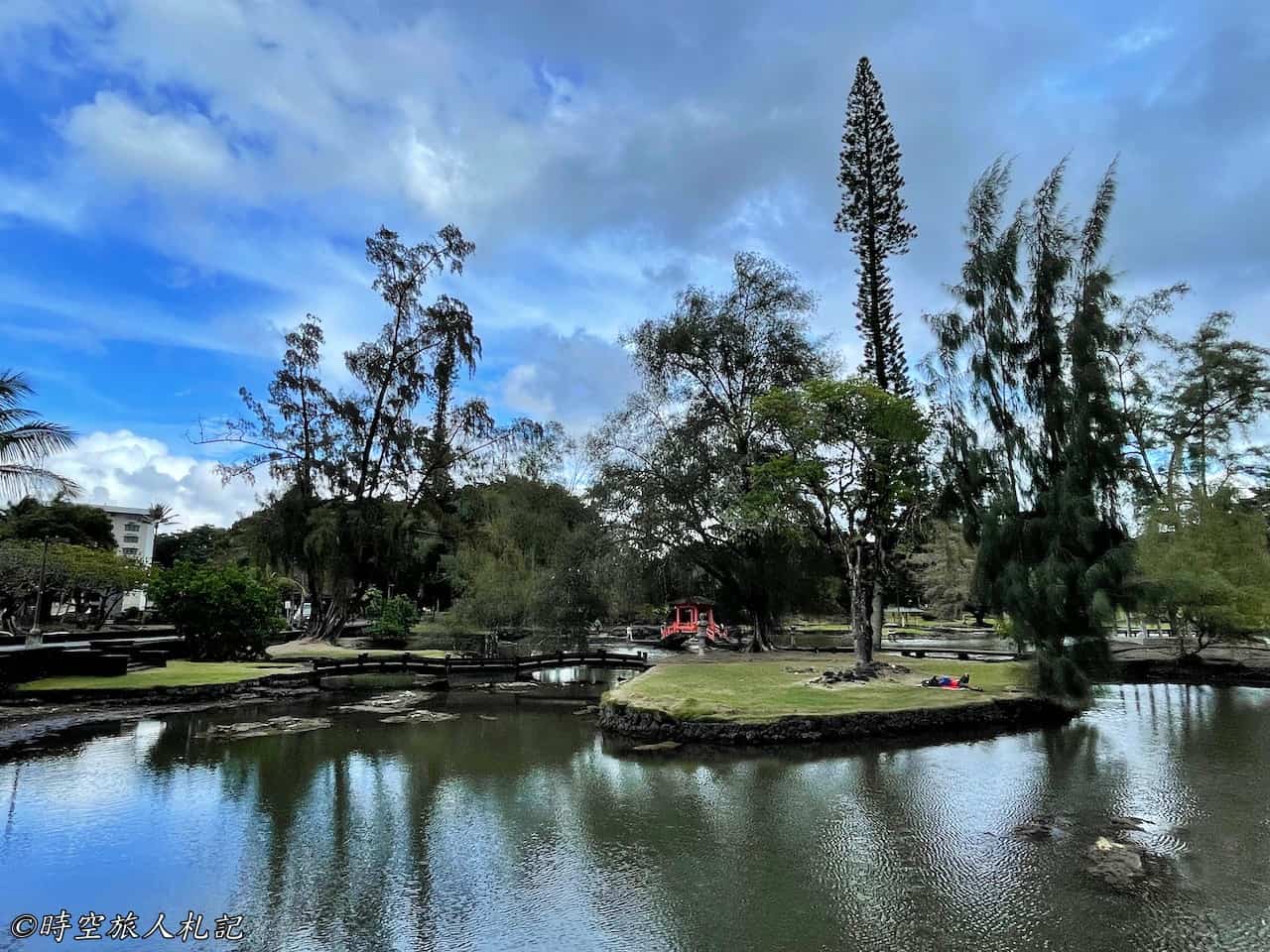
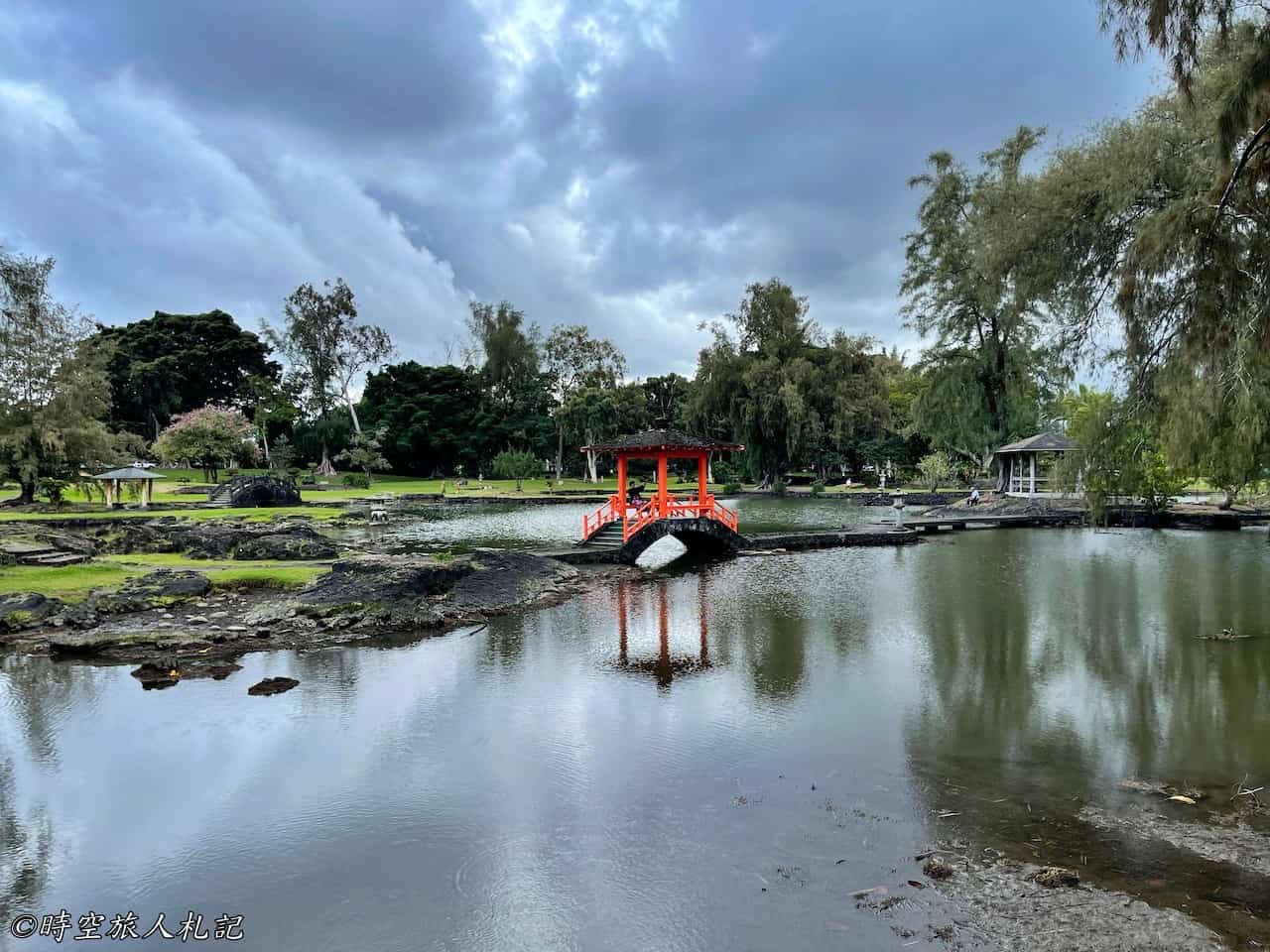
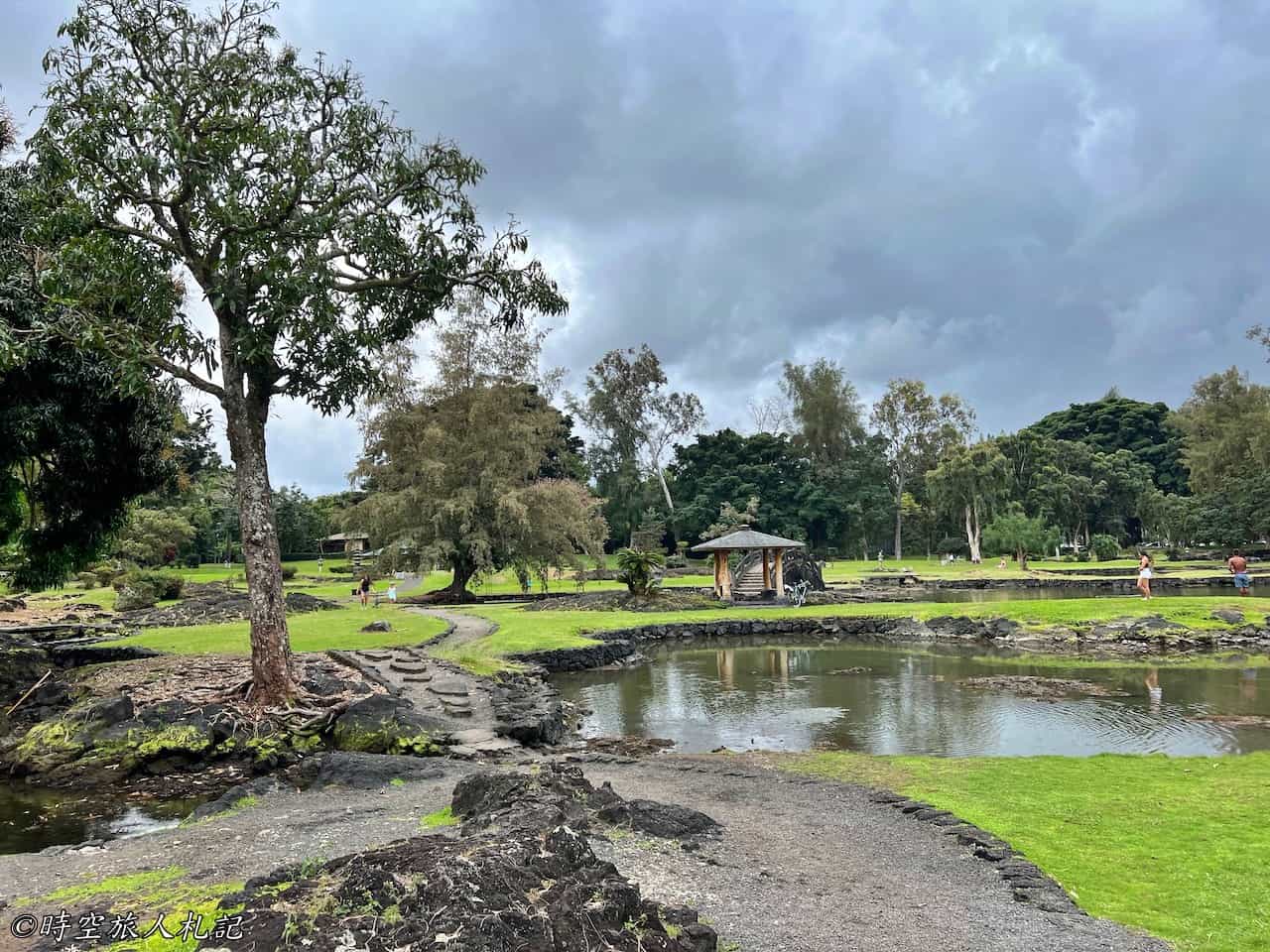
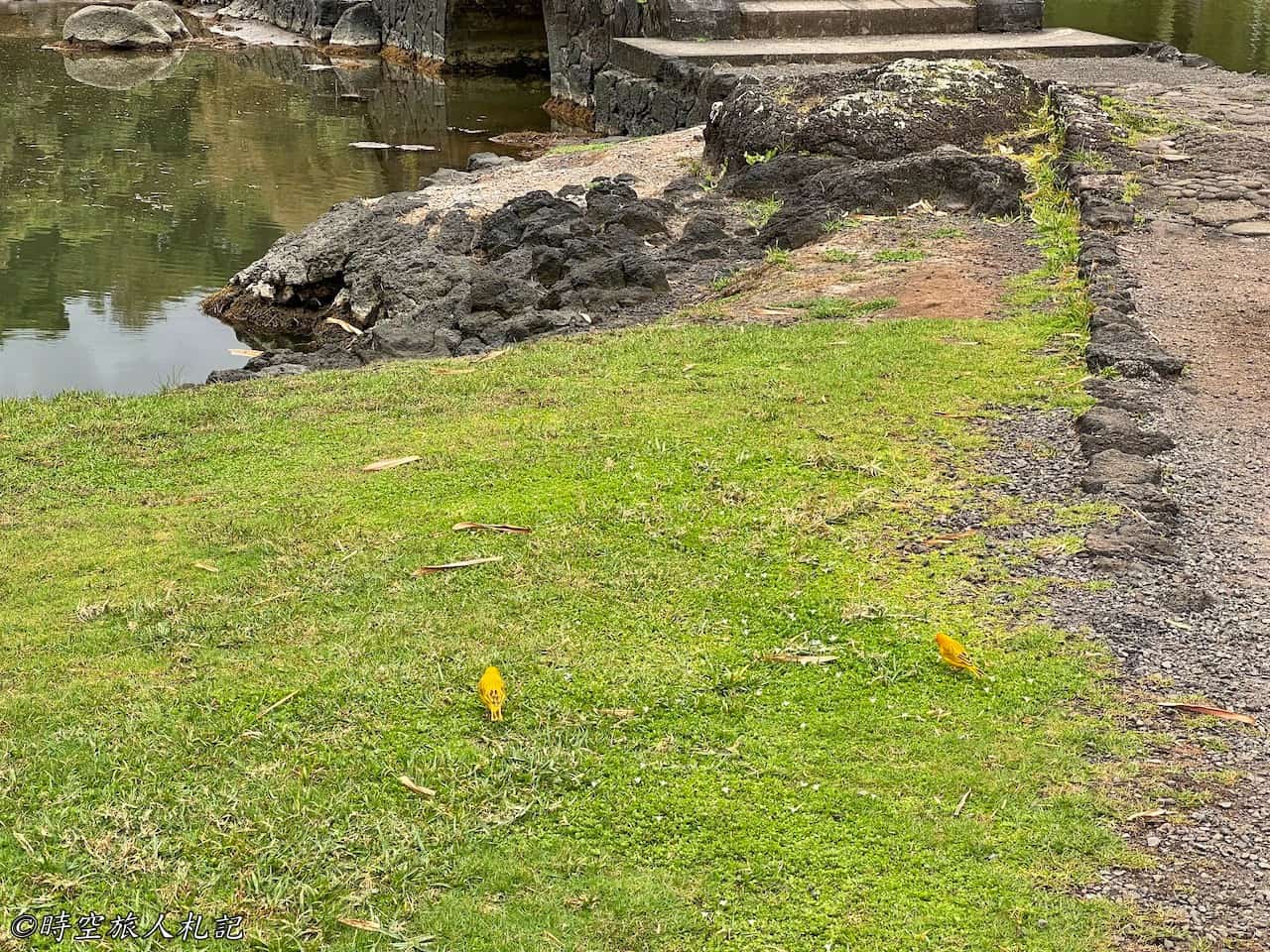
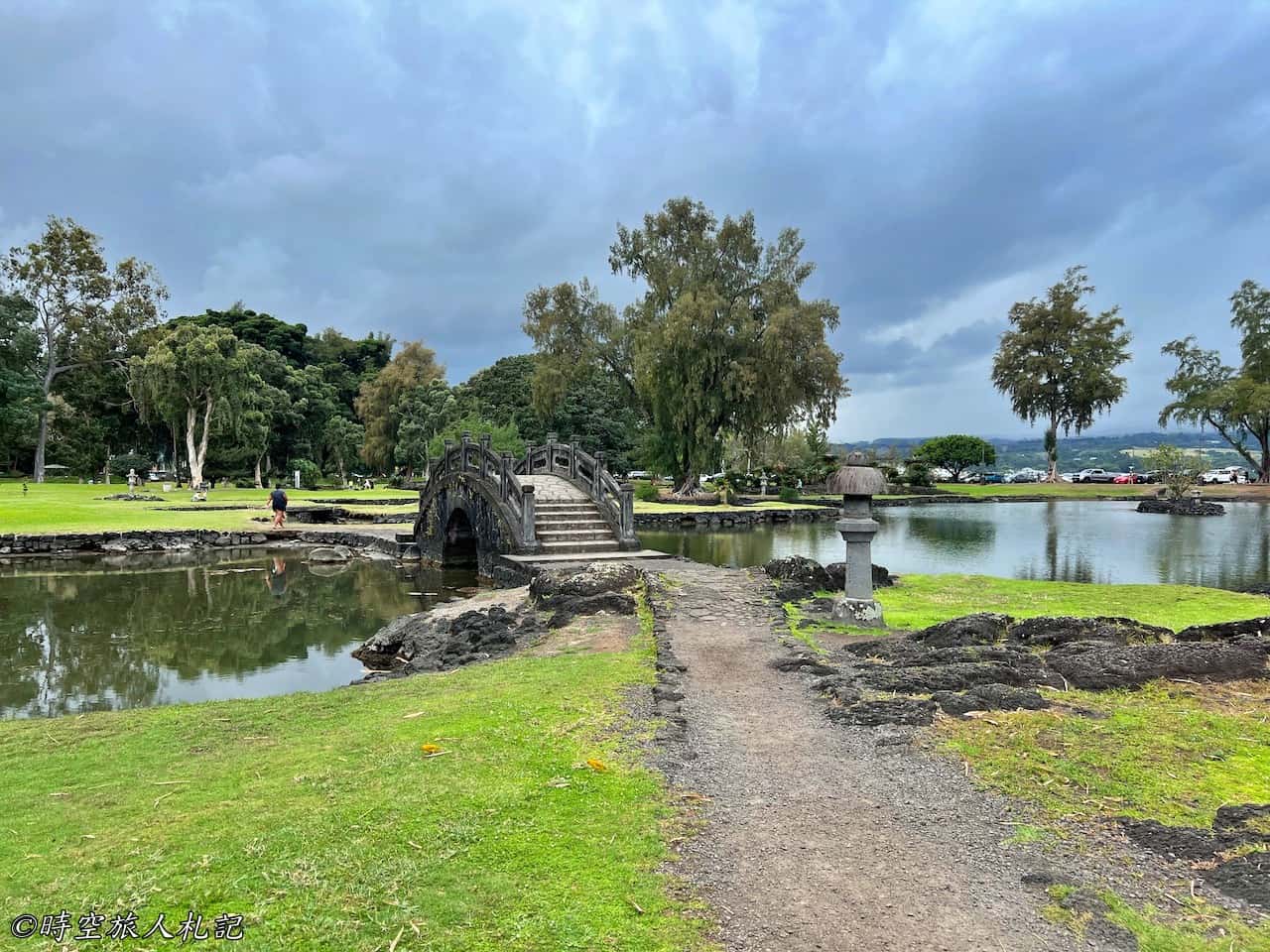
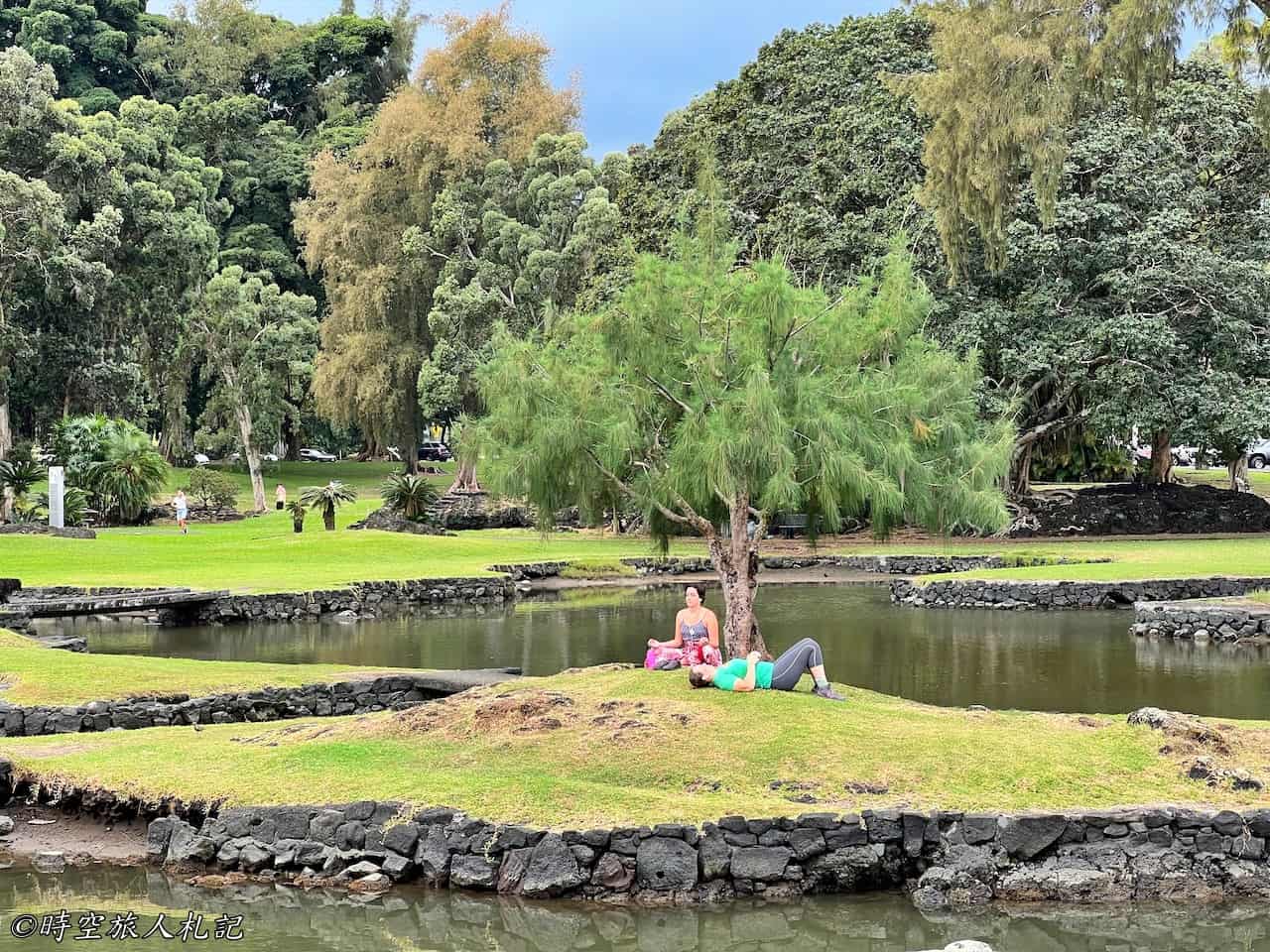
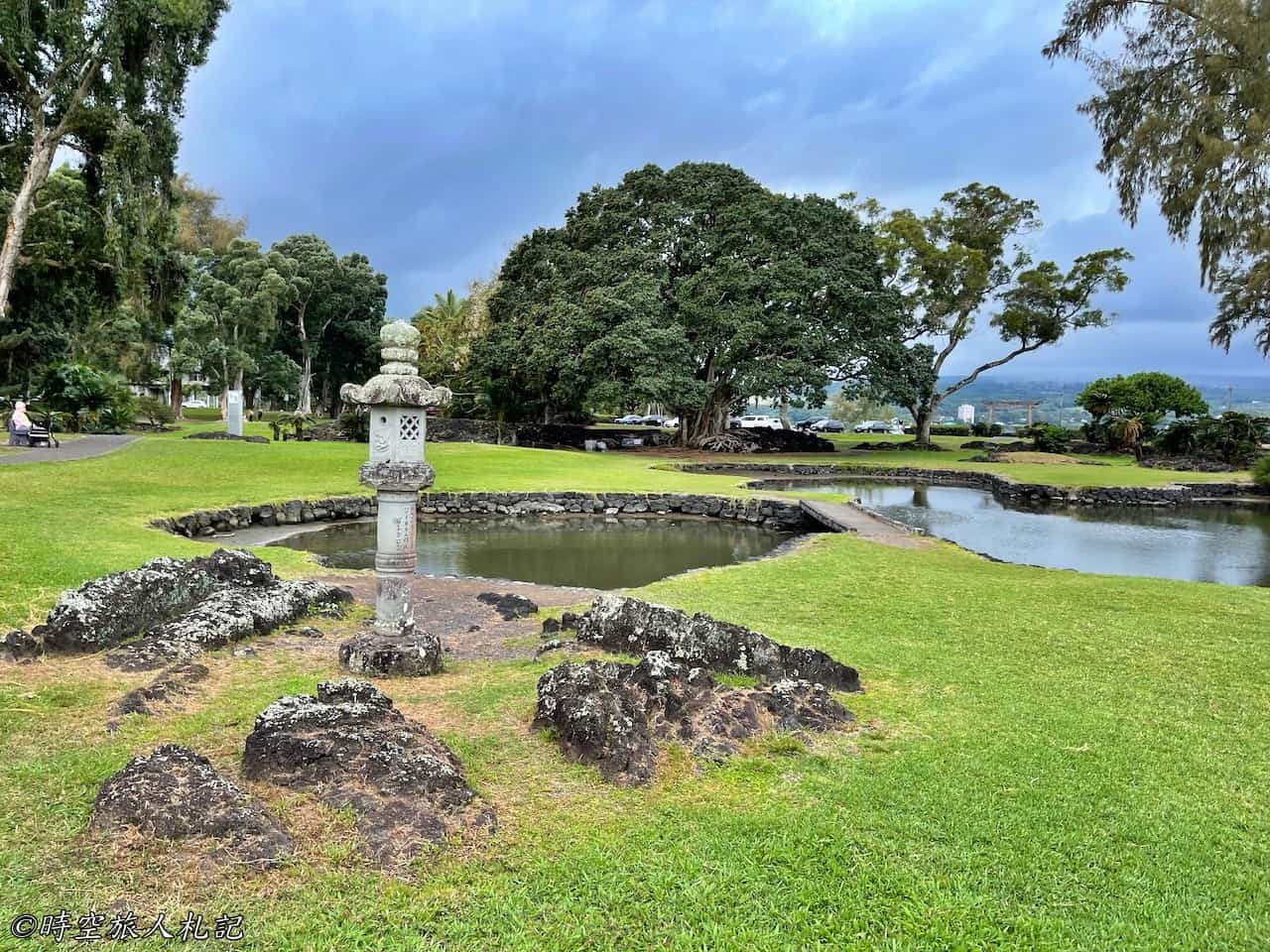
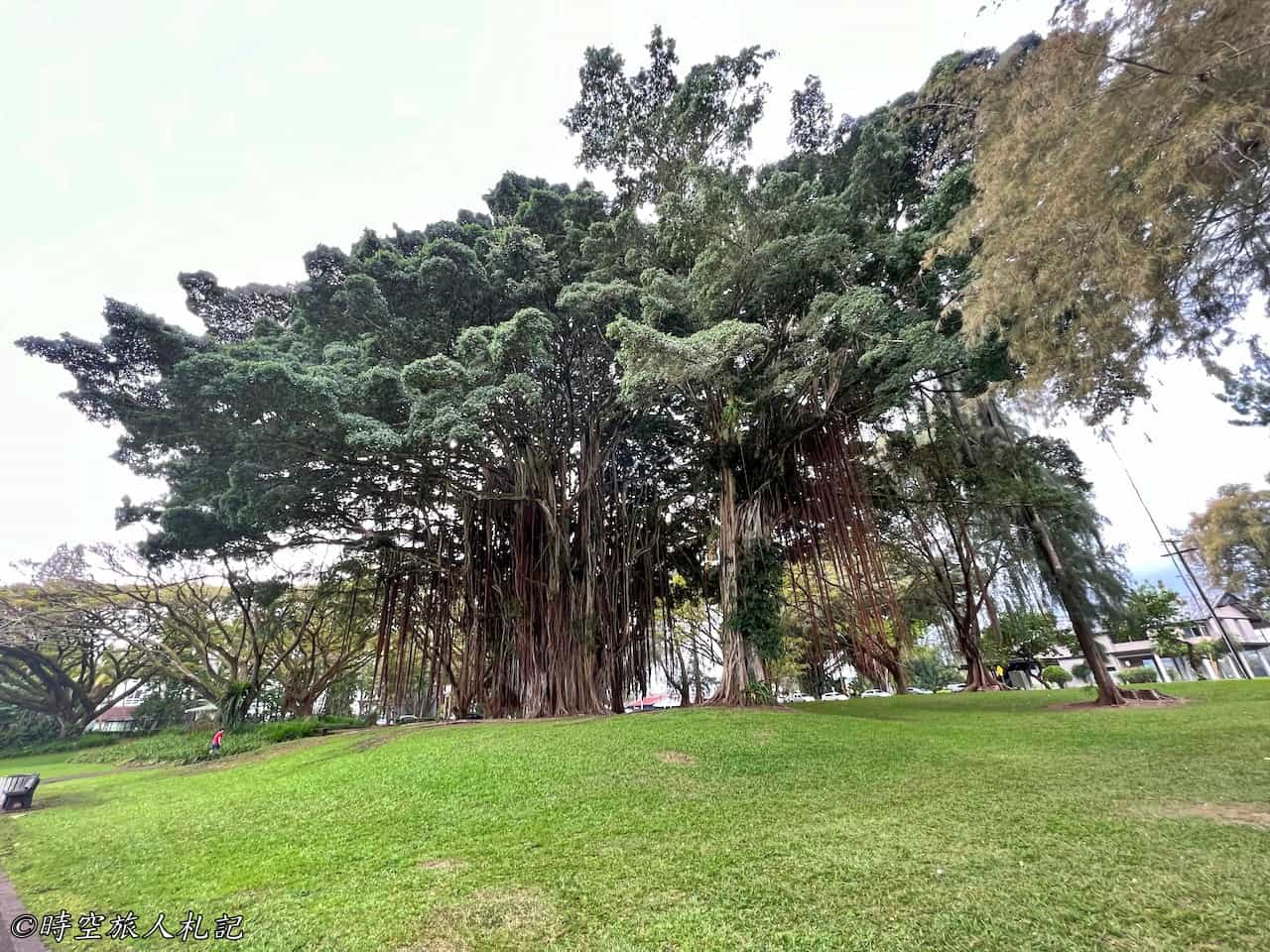
Coconut island
Coconut Island, known as Moku Ola in Hawaiian, is a small island located in Hilo Bay. It is connected to the main island of Hawaii by a bridge, allowing easy pedestrian access. Despite its small size, Coconut Island boasts two beaches and is a popular picnic spot among locals. It's also the only beach in Hilo where we saw people swimming.
Before the bridge was built, there were several households on the island that operated ferries for picnicking visitors. However, since the tsunami in the 1960s, the original houses have all been destroyed.
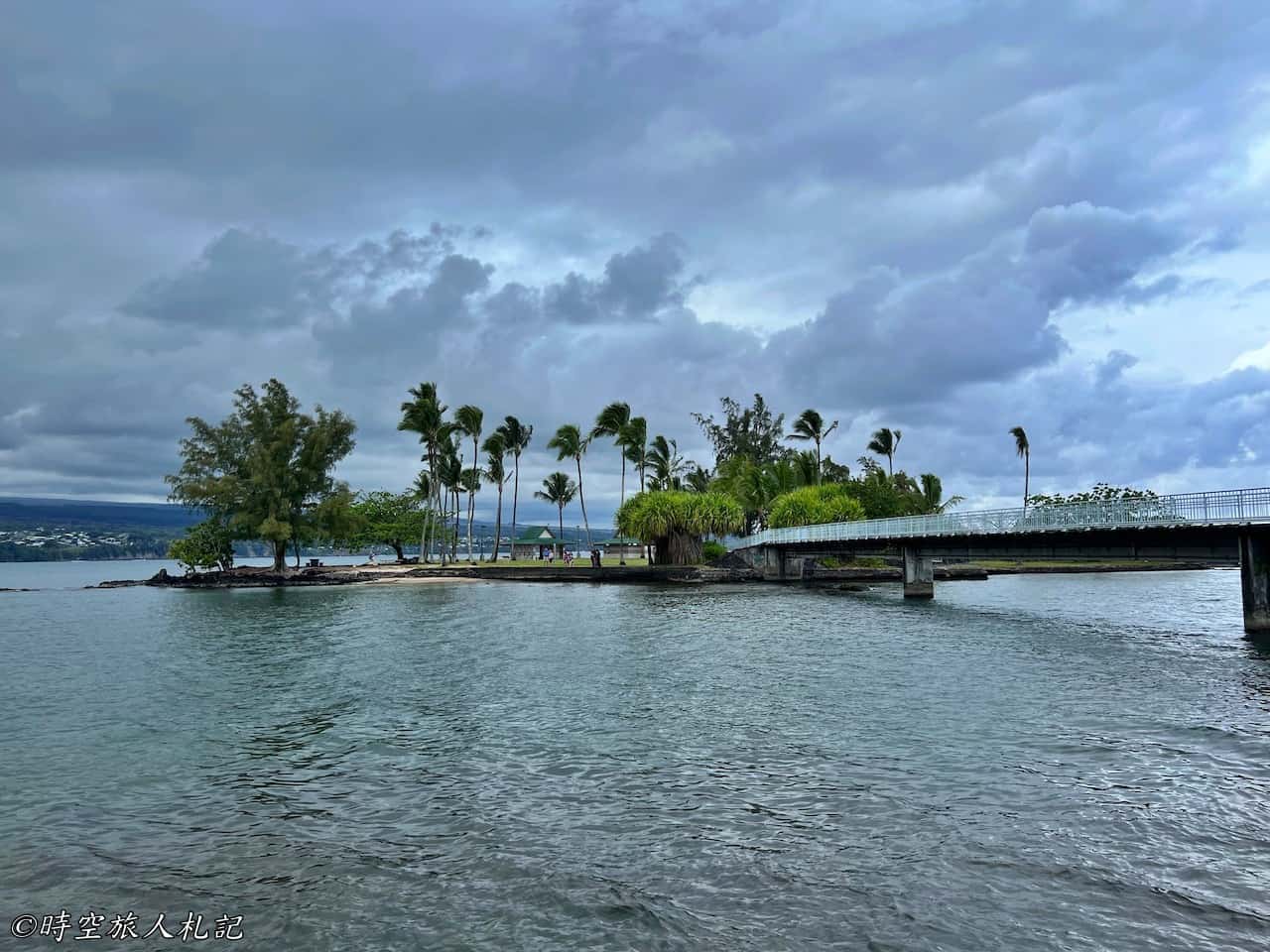
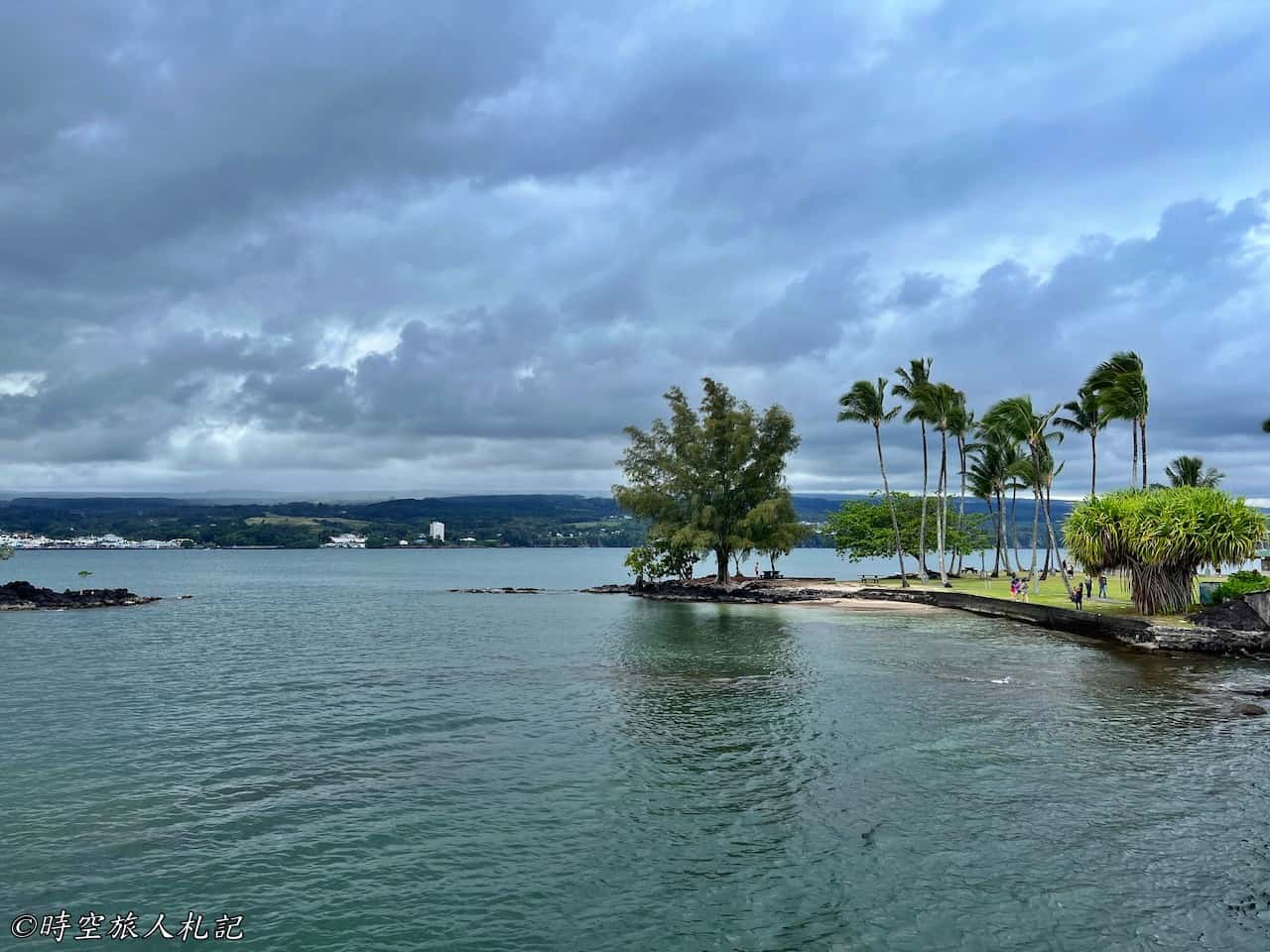


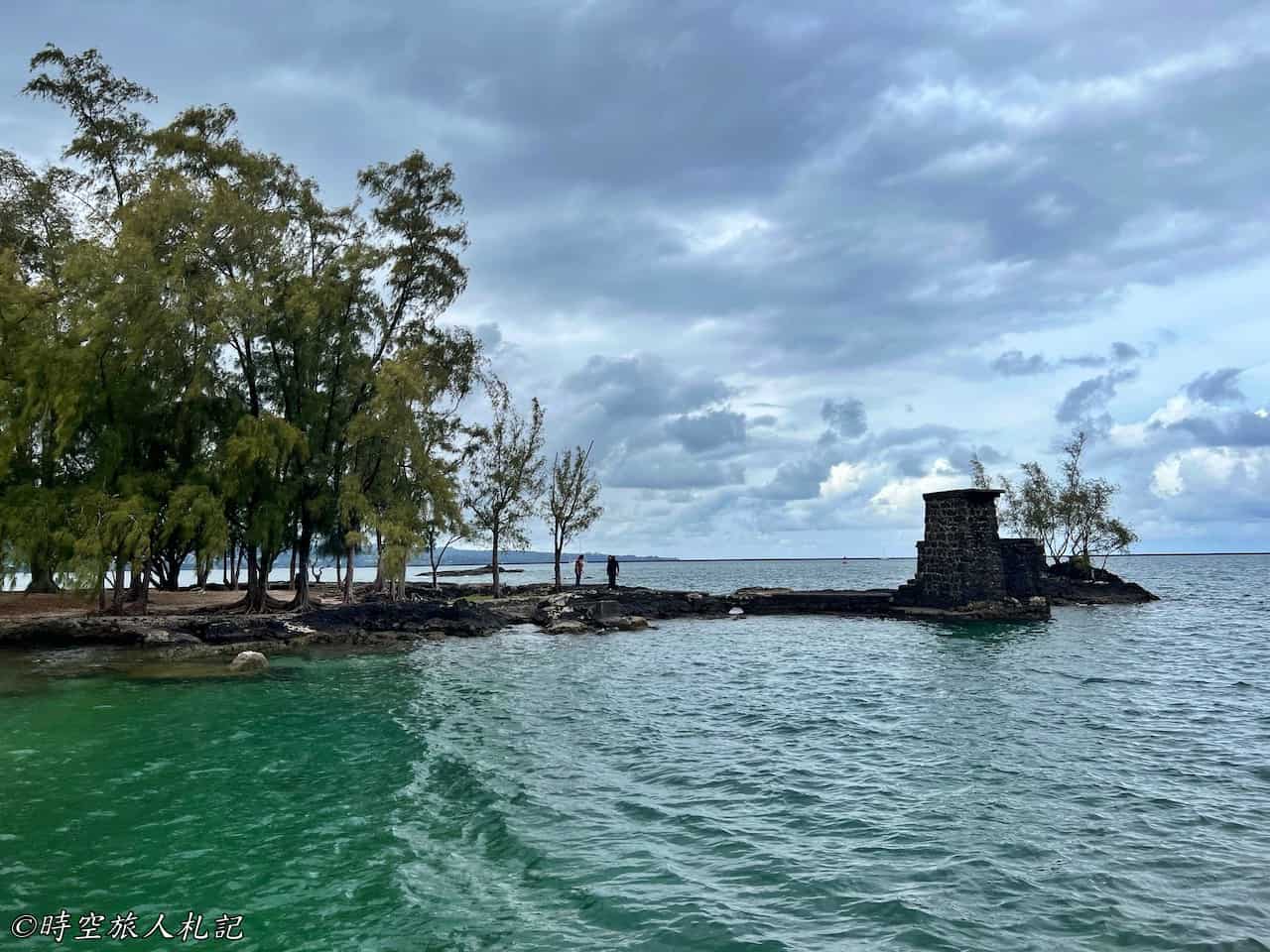
Hilo Farmer's Market
On the other side of the street, the Farmer’s Market isn't very large but is quite enjoyable to browse through. It opens every day from 7:00 AM to 3:00 PM. Here, you can find many fresh and reasonably priced Hawaiian fruits, including lychees and oversized avocados that are rare on the mainland United States. If you don't plan on eating elsewhere, buying some fruits and Hawaiian banana bread here can easily fill you up.
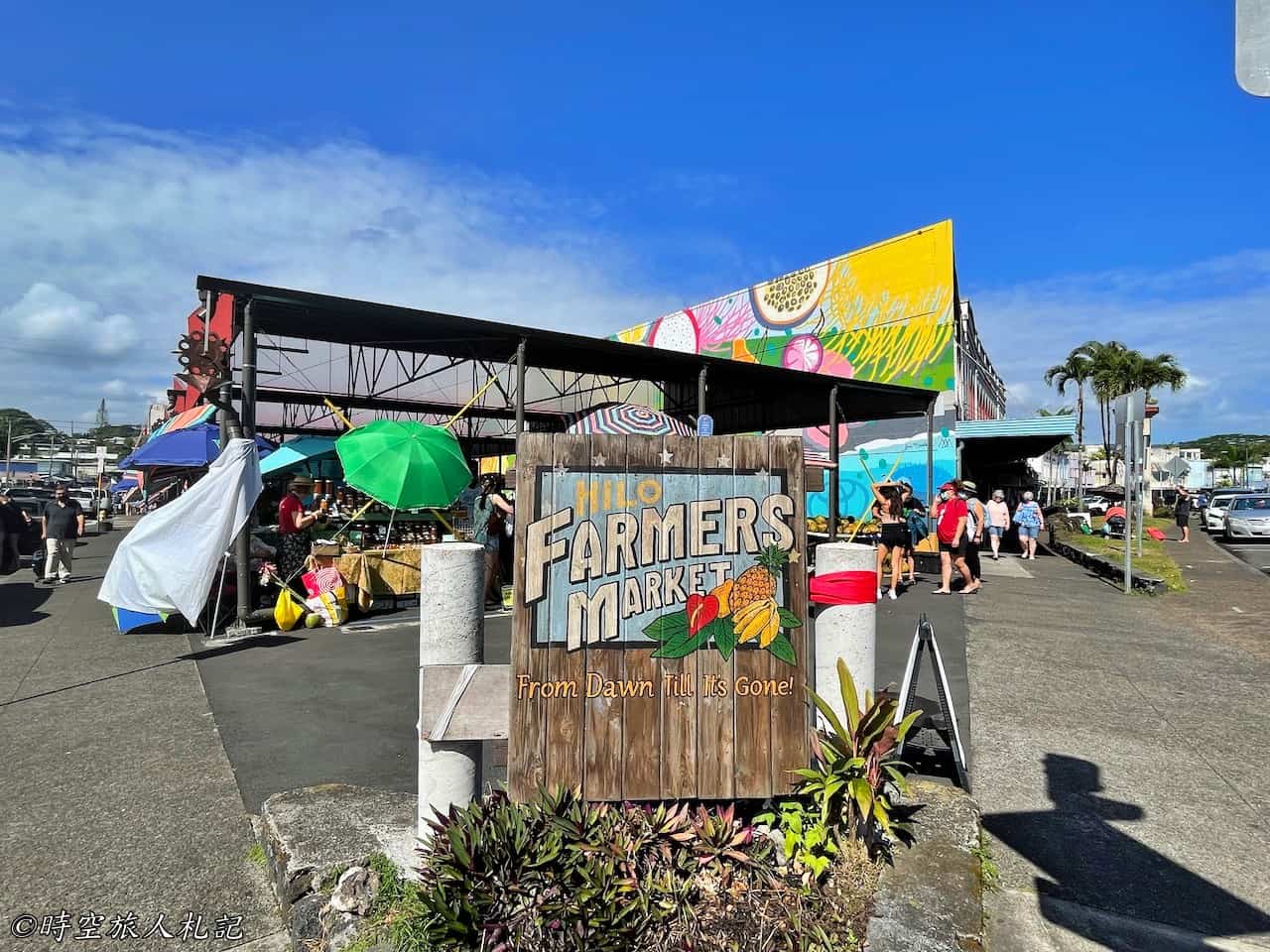
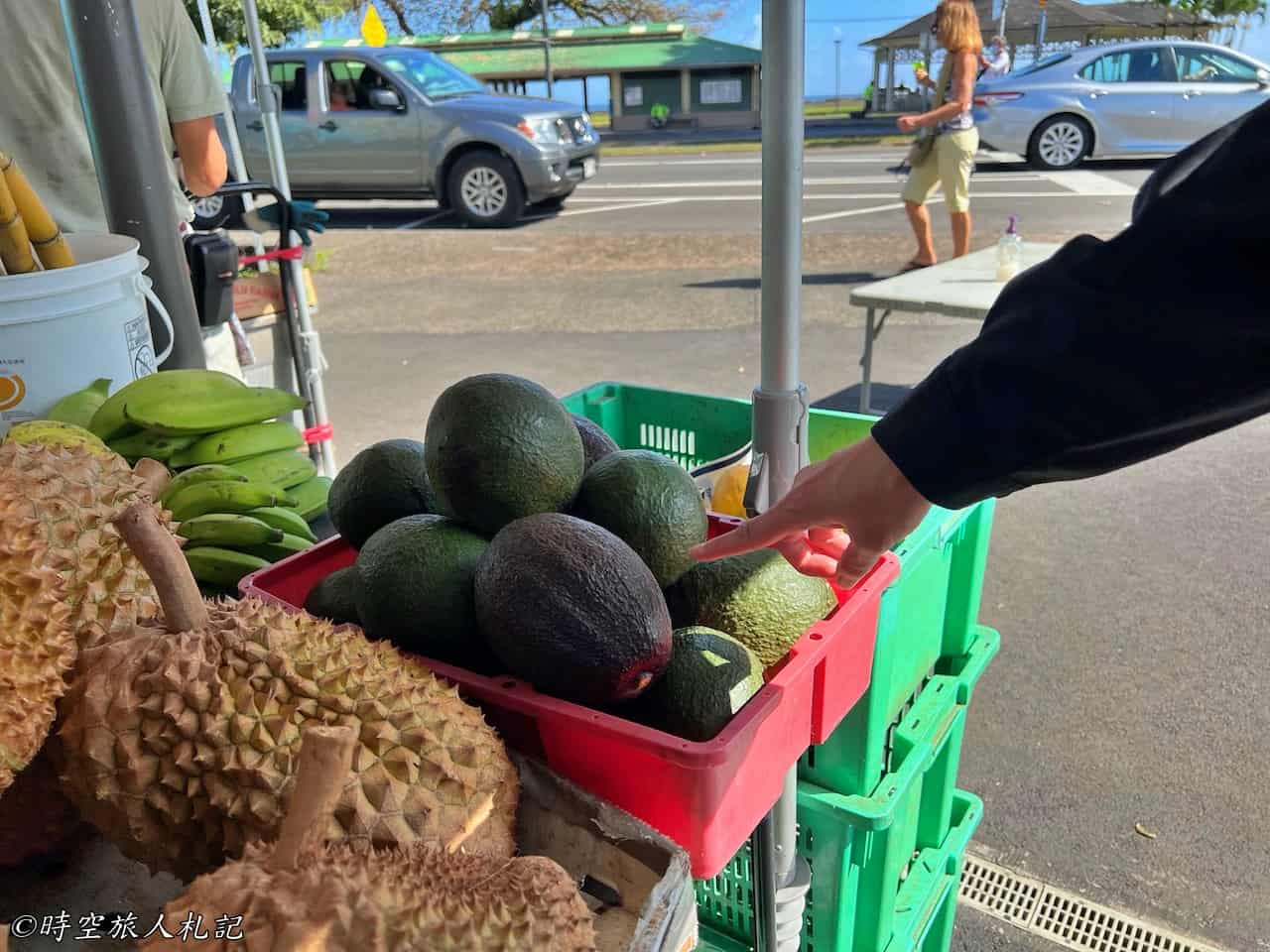
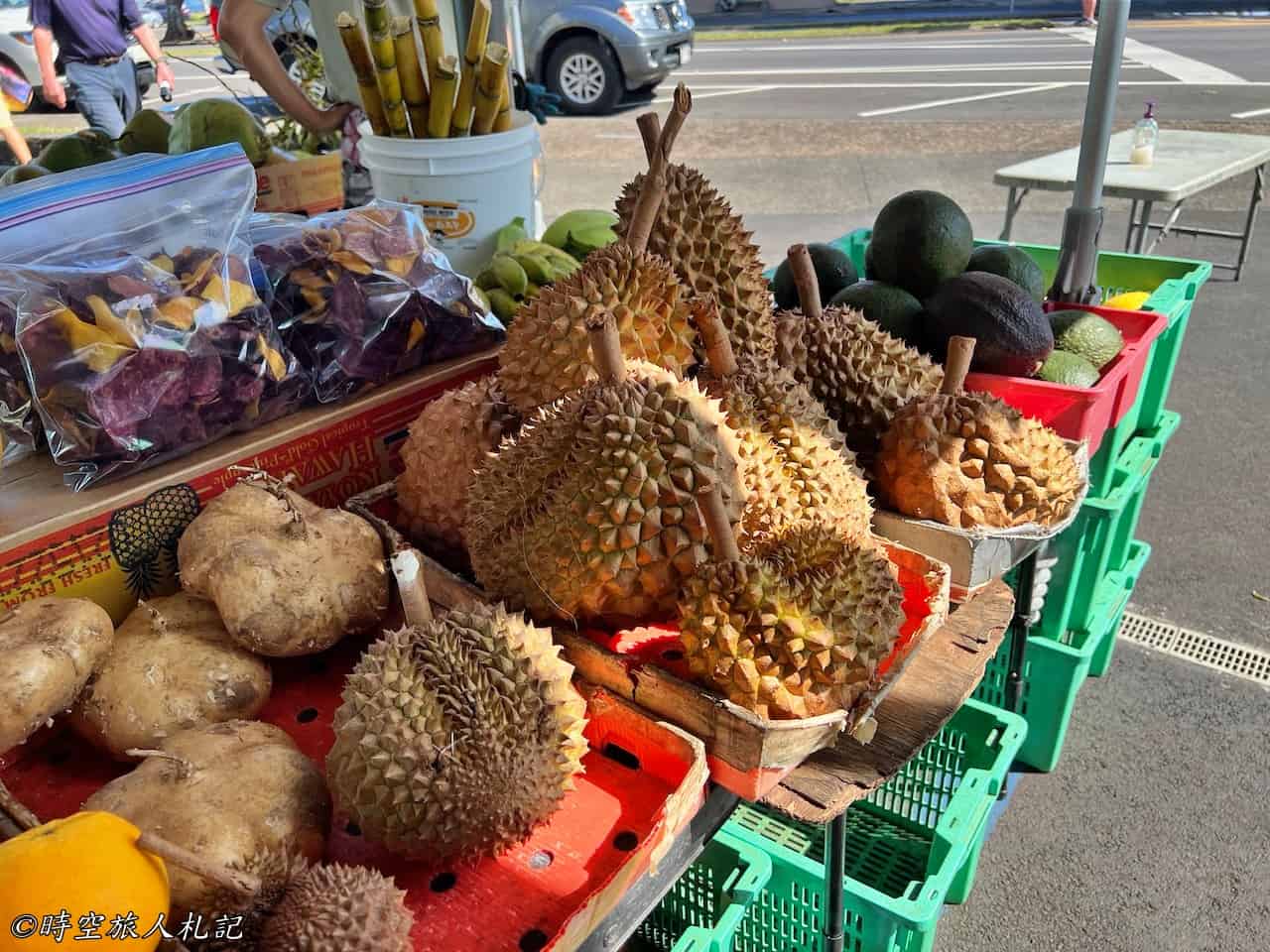
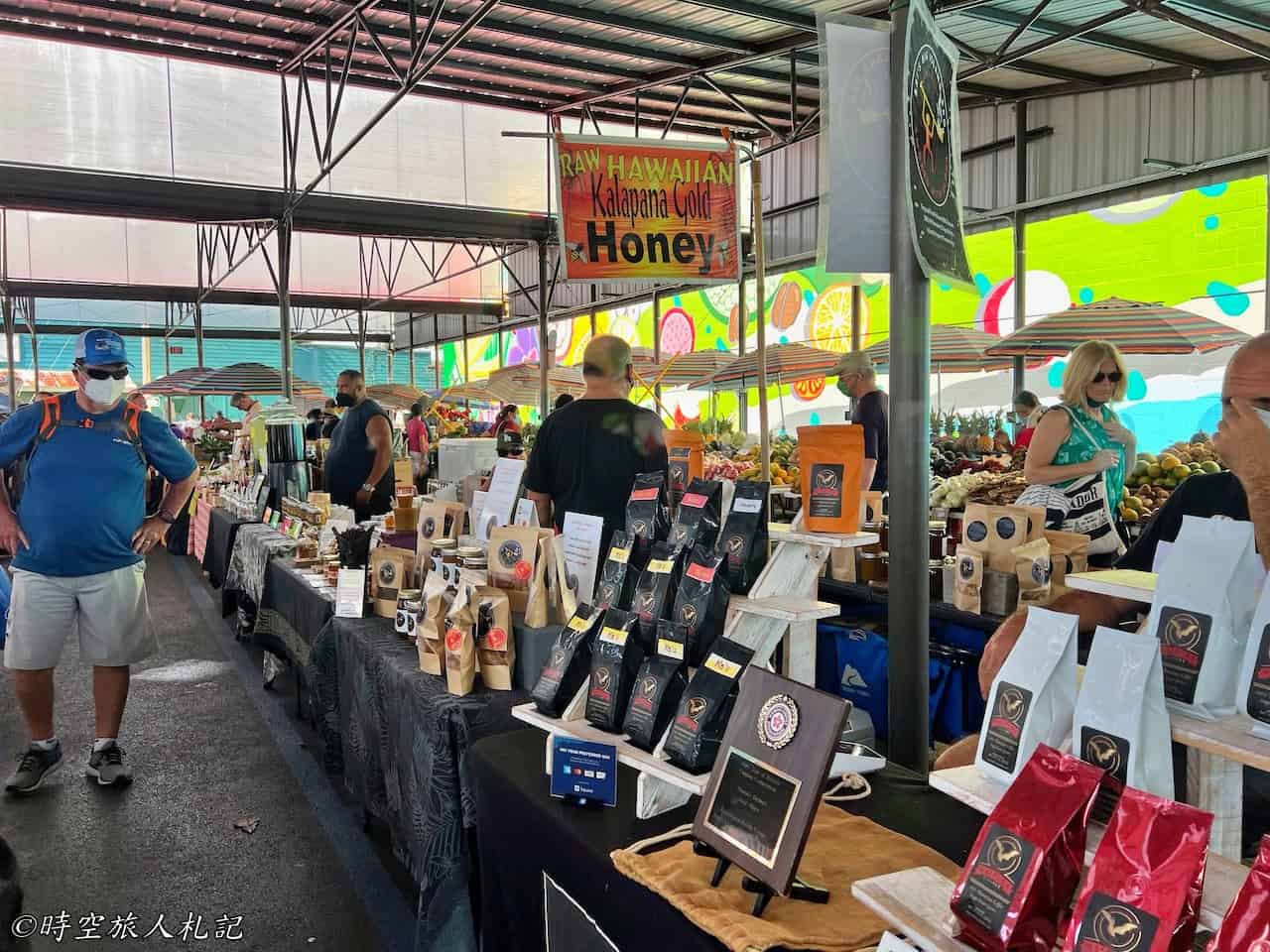

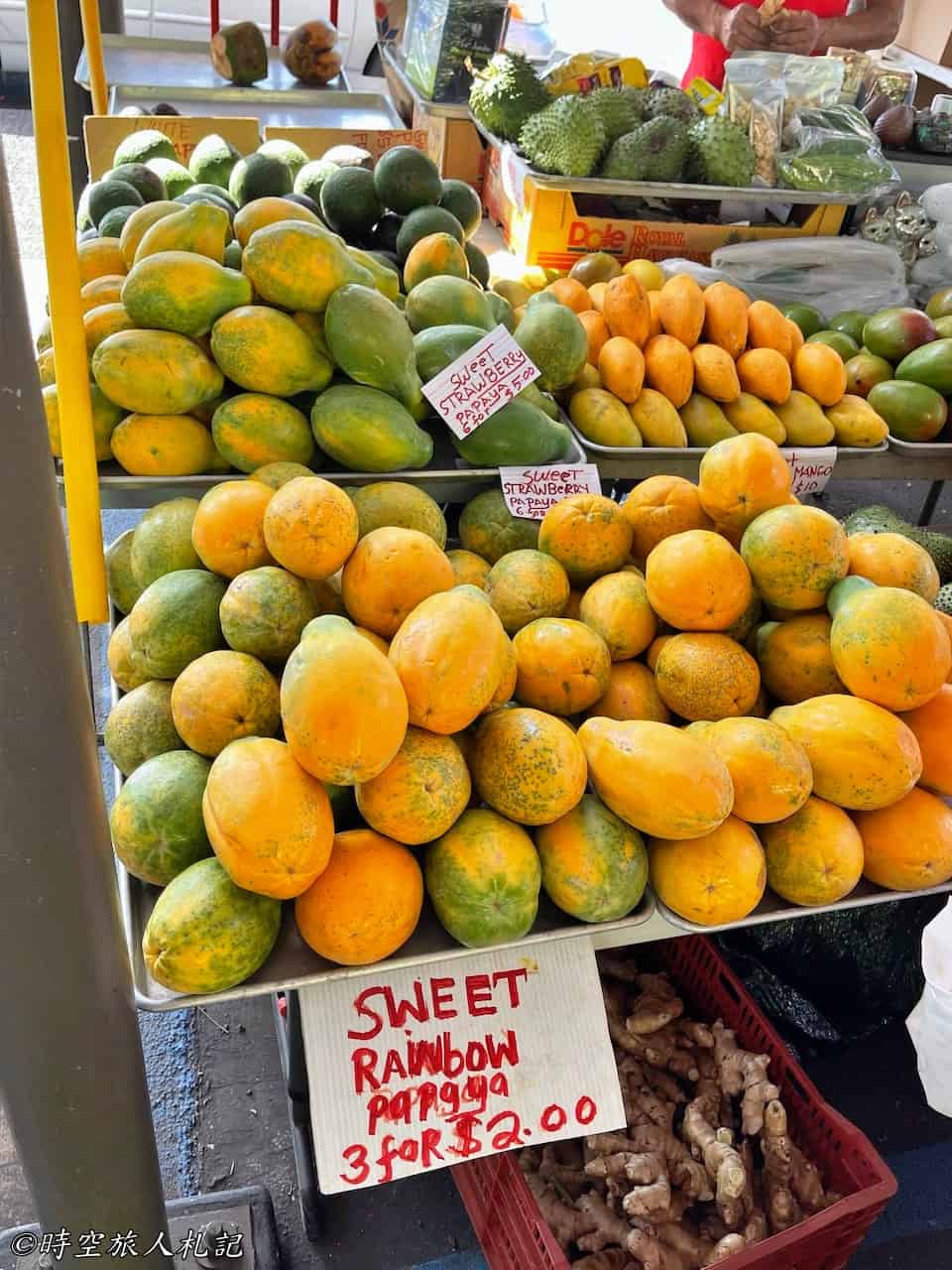
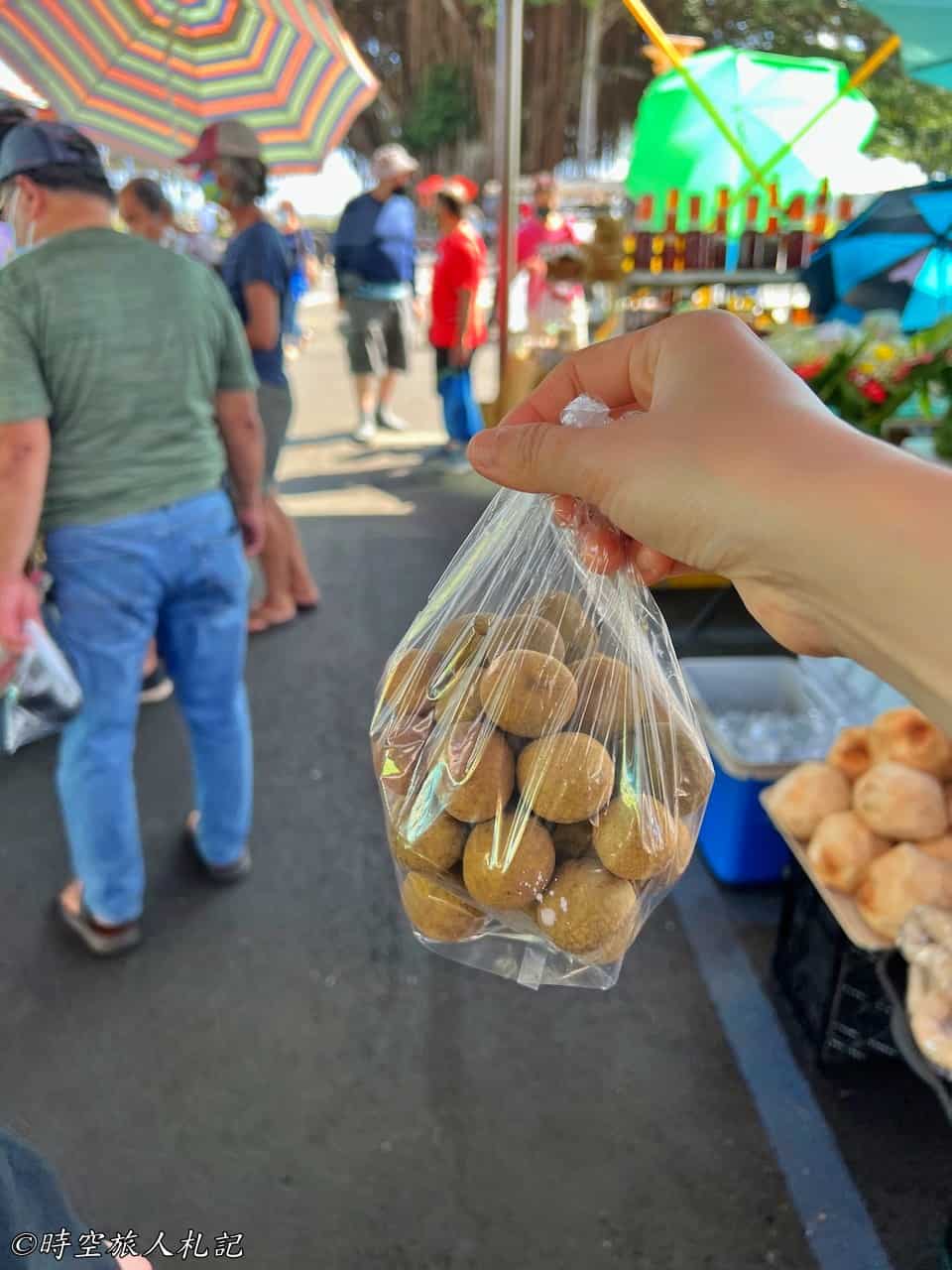
- Hotel search: Agoda
- Activities & tickets: KKday / Klook / TripAdvisor
- Travel credit cards (US only): My card picks + beginner tips
Wailuku River
Not far from the center of Hilo town, following Wailuku River inland from the coast, there are several interesting attractions: Rainbow Falls, Boiling Pots, and Kaumana Caves.
Rainbow fall
Rainbow Falls is one of the waterfalls on the Wailuku River, known as Waianuenue Falls in Hawaiian, meaning "rainbow in the water." It is surrounded by lush rainforest vegetation. What makes it especially unique is that on clear, sunny days, you can see a rainbow around 10:00 in the morning.
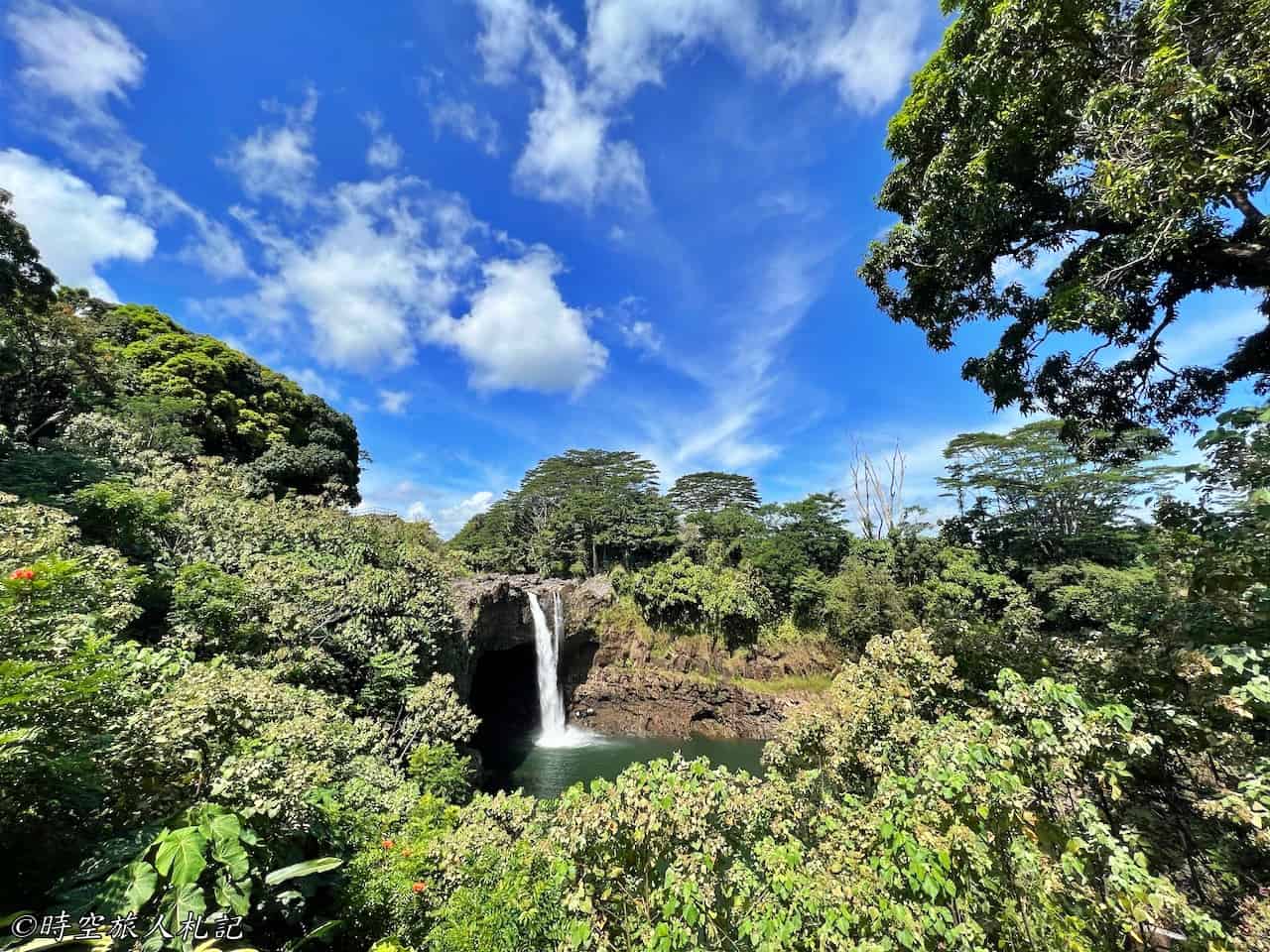
Boiling pots
Boiling Pots, located upstream from Rainbow Falls, is named for its geological formations. Over ten thousand years ago, this area was not a river but rather a flow of magma from Mauna Loa. As a result, the landscape features a series of large holes resembling boiling pots of hot soup.
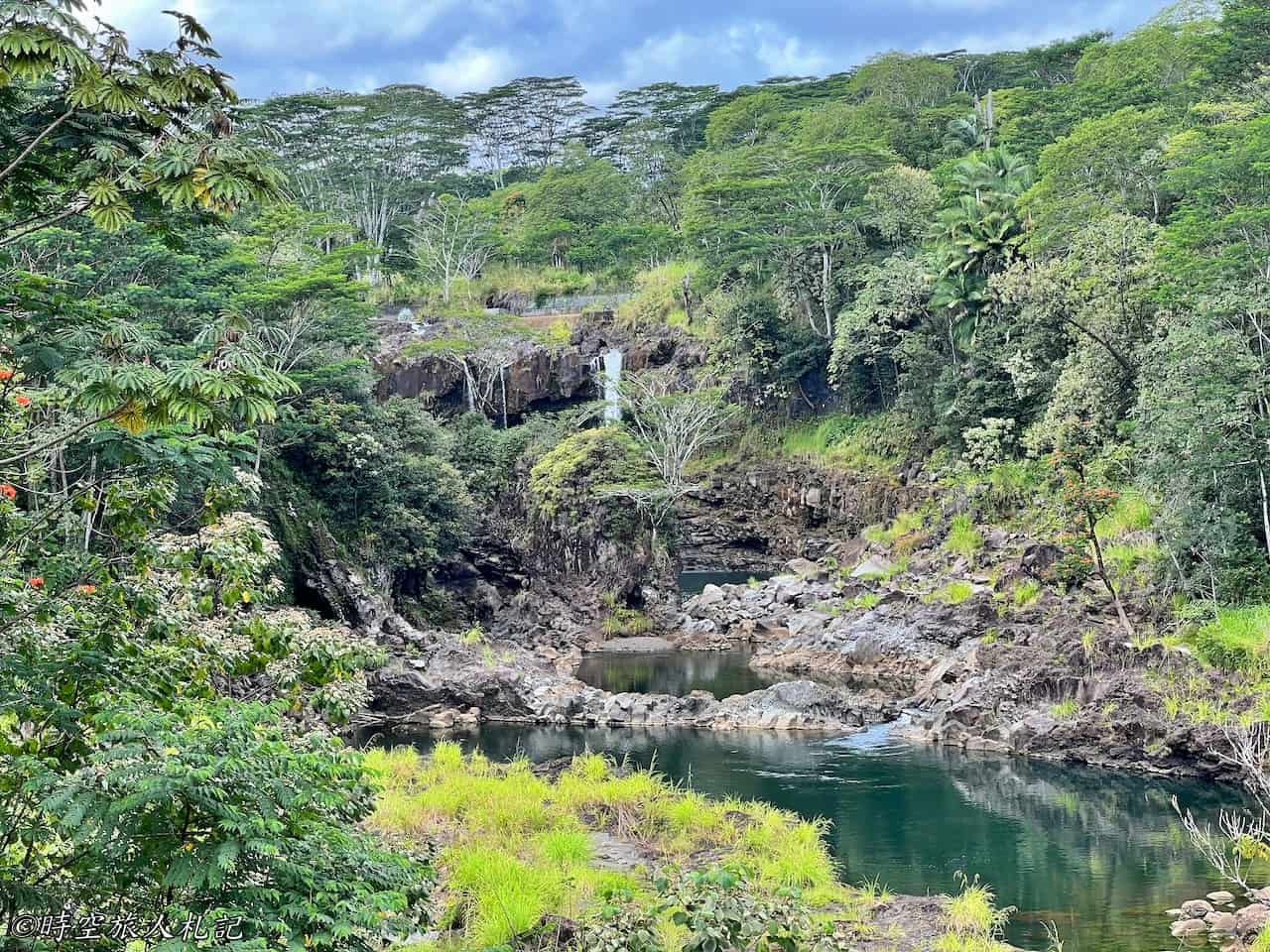
Kaumana Caves
Kaumana Caves were once lava tubes filled with molten lava. From the surface, there are entrances to the caves on both sides. While the lava tube likely extends for a considerable distance, only about 0.5 miles of it is accessible for exploration. Beyond that point, access is prohibited as the land above is privately owned.
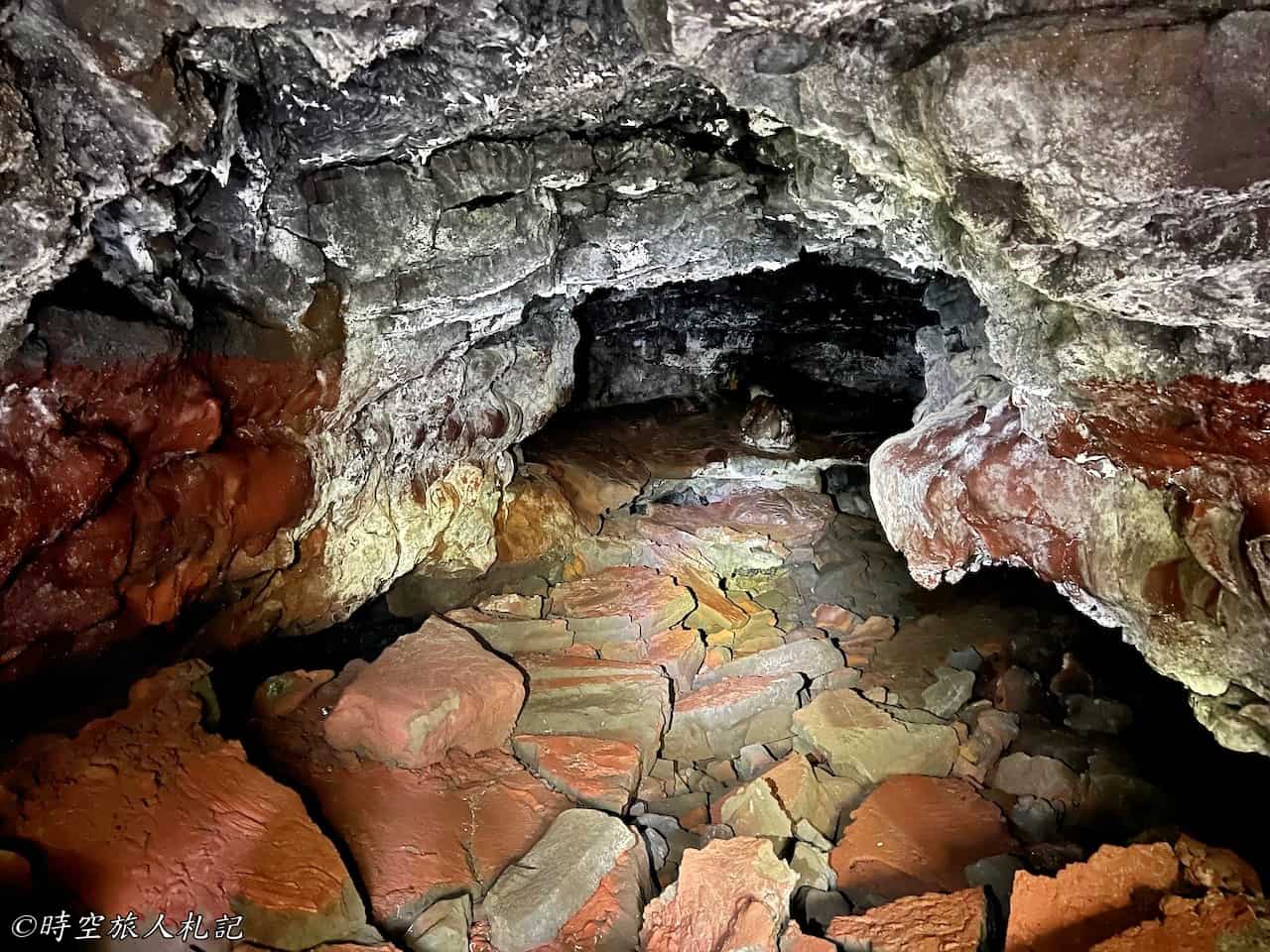
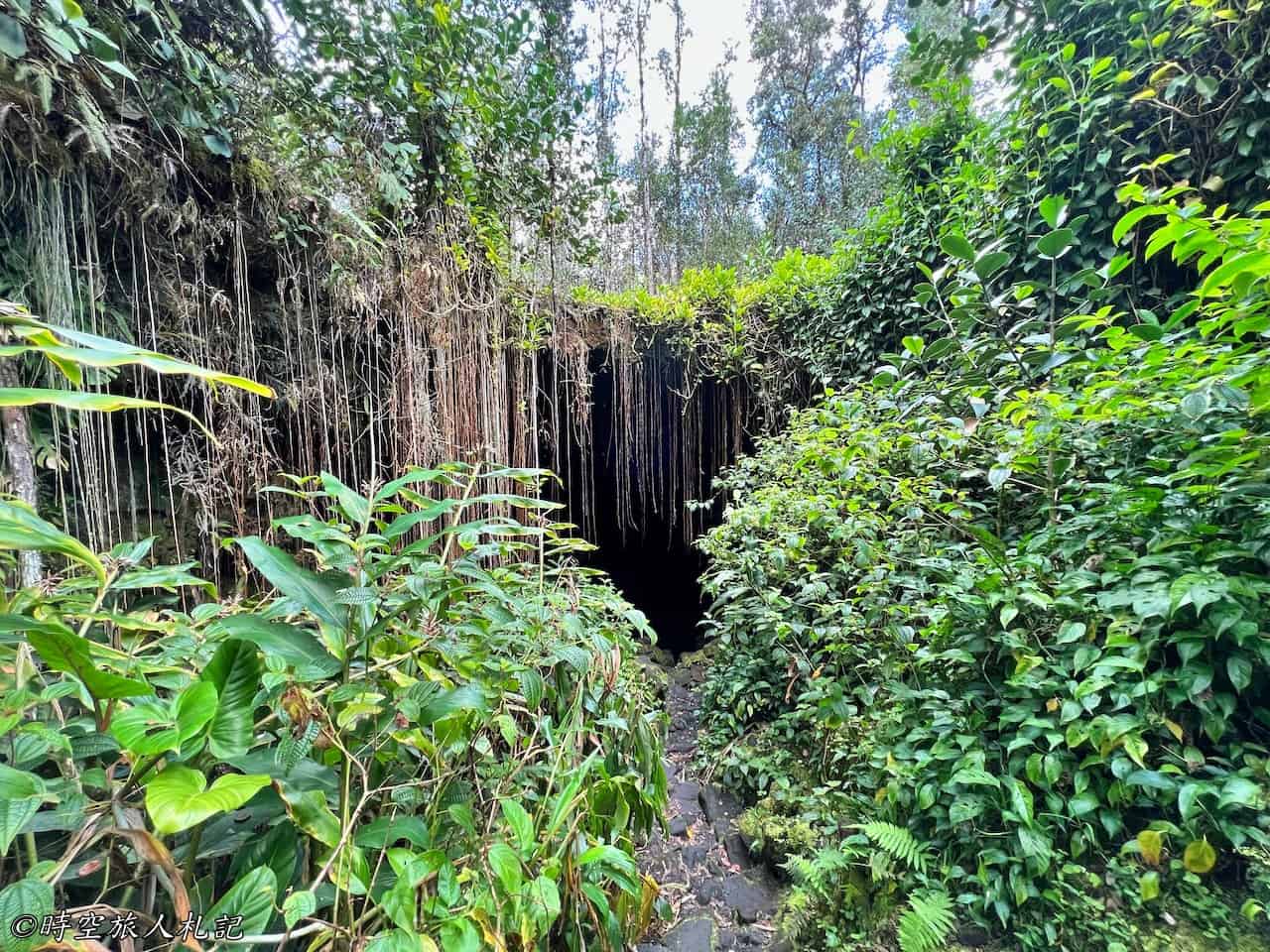
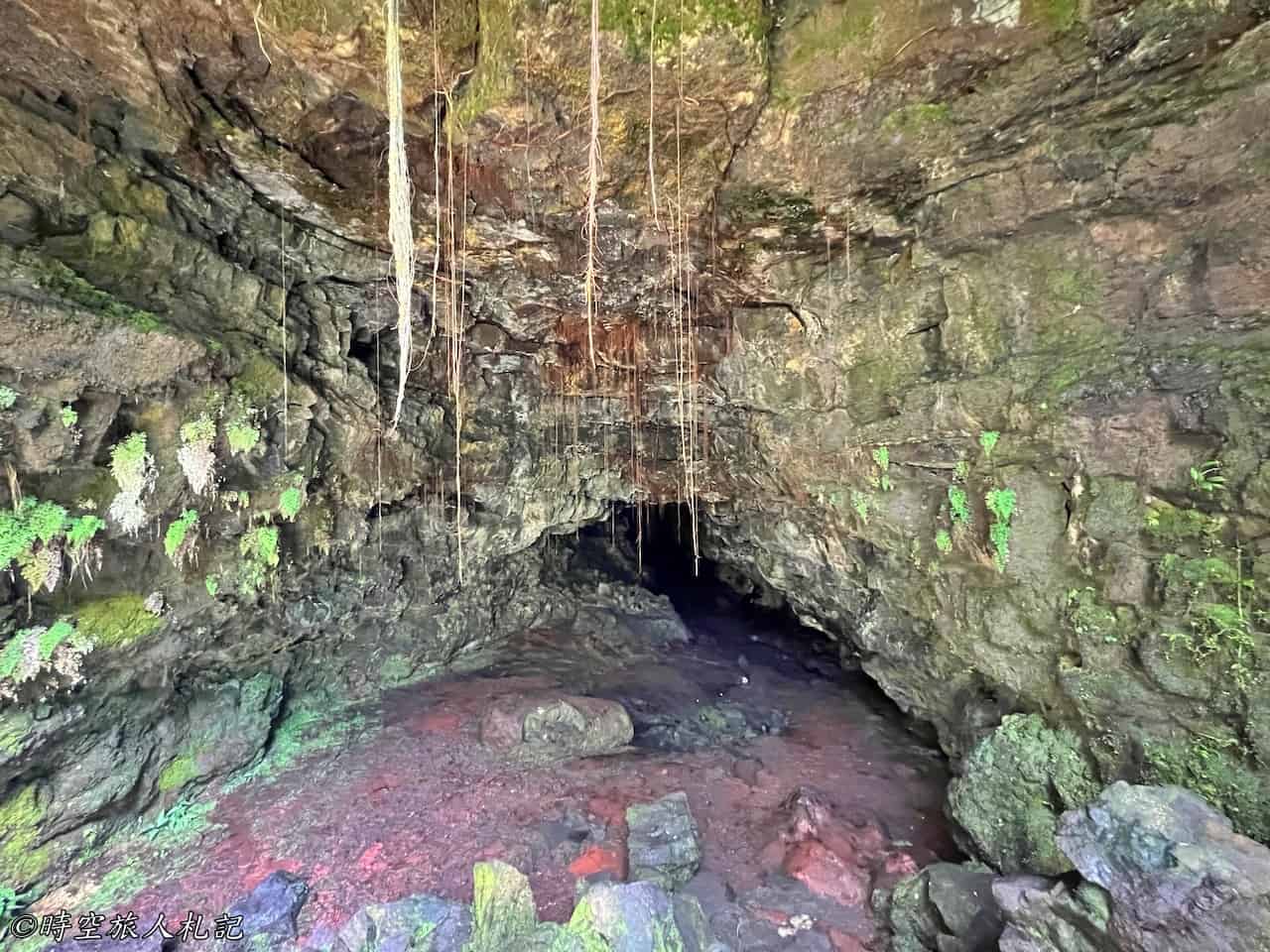
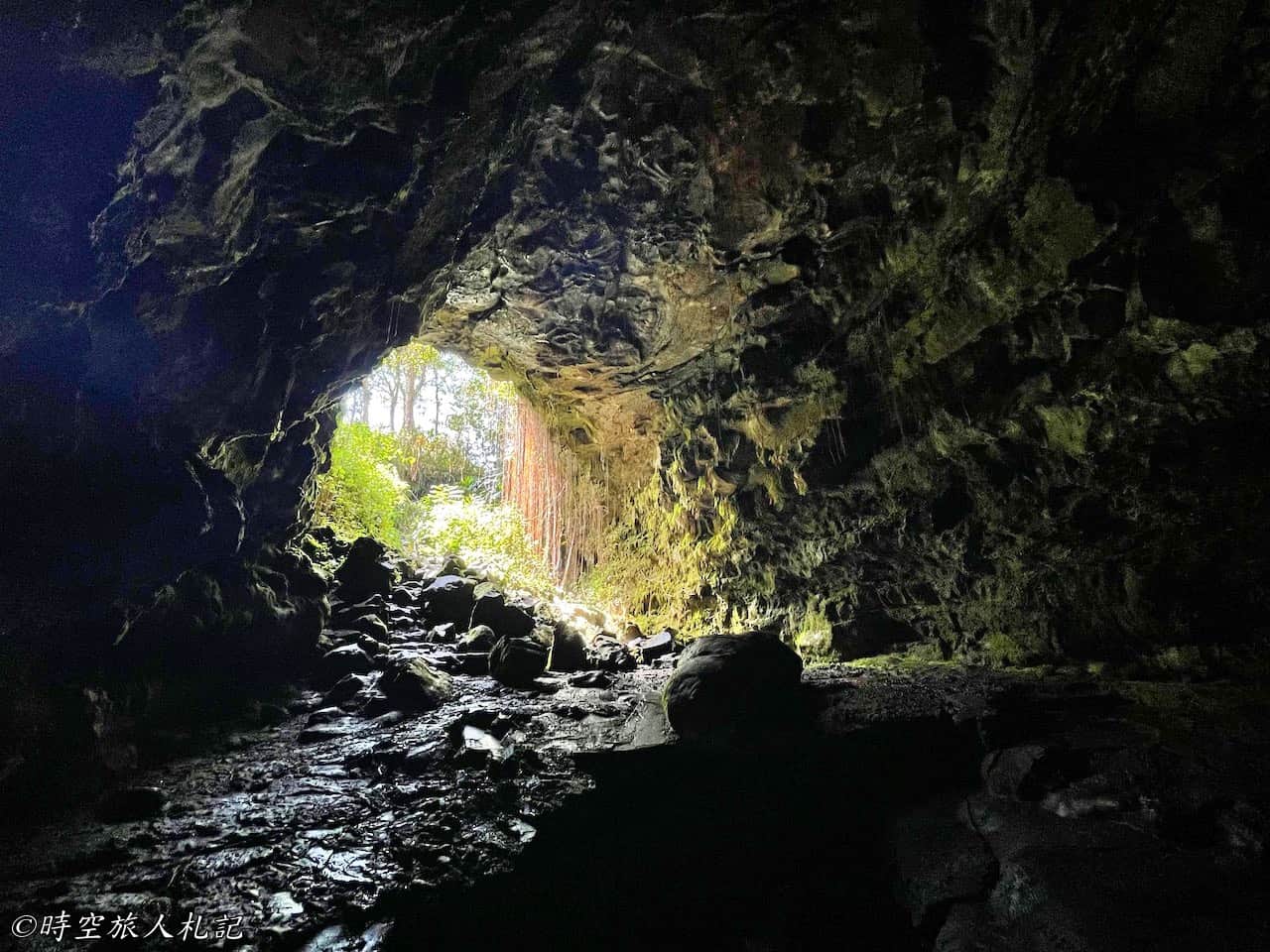
Navigating the accessible section alone was quite challenging. We ventured into the cave on the right, which delved deeper. Some areas were collapsed, requiring us to crawl using both hands and feet. The passage involved a lot of climbing and descending, and the space inside was very narrow. Following the painted markings on the rocks for guidance, we crawled and scrambled our way through for about an hour.
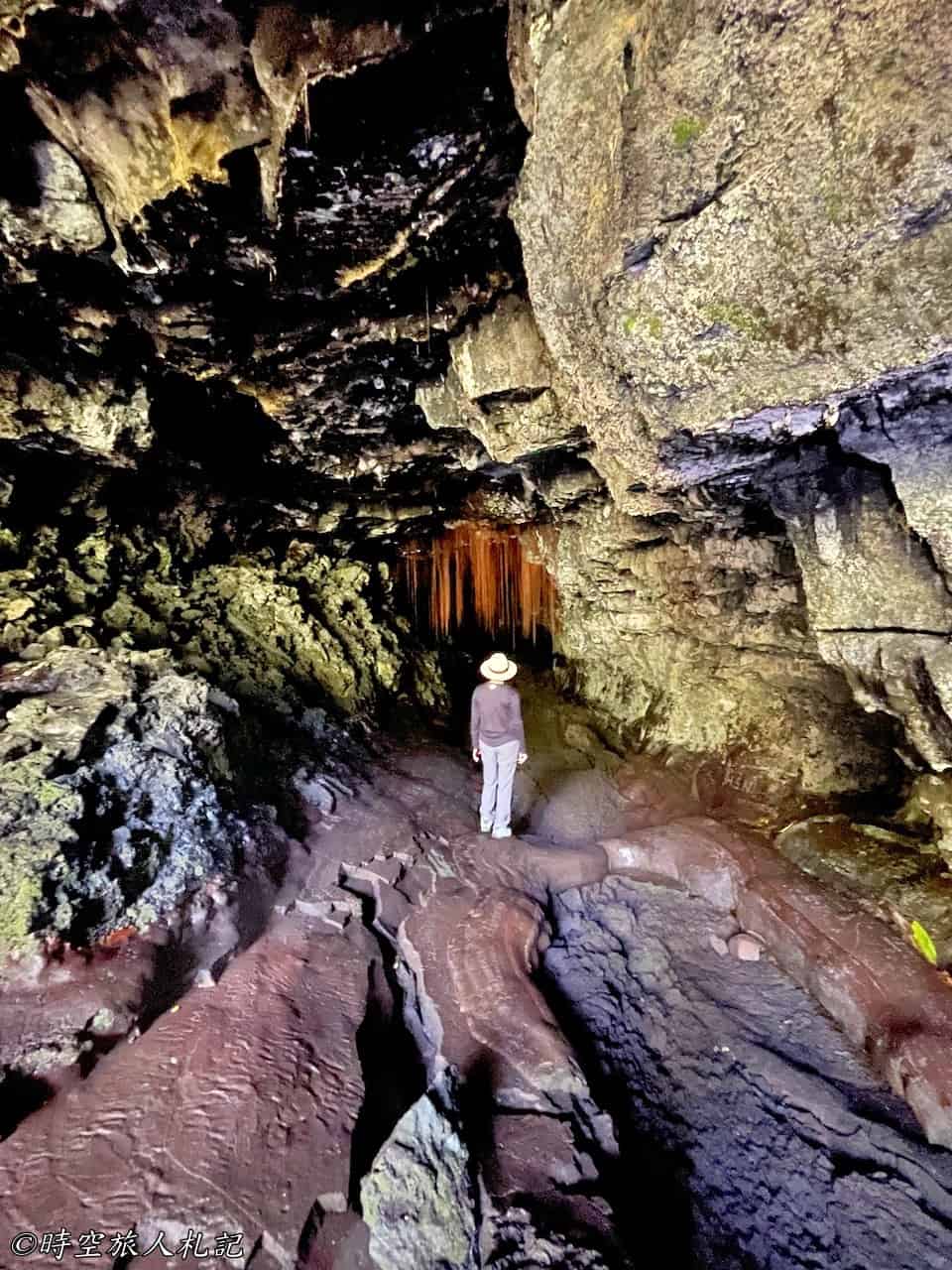
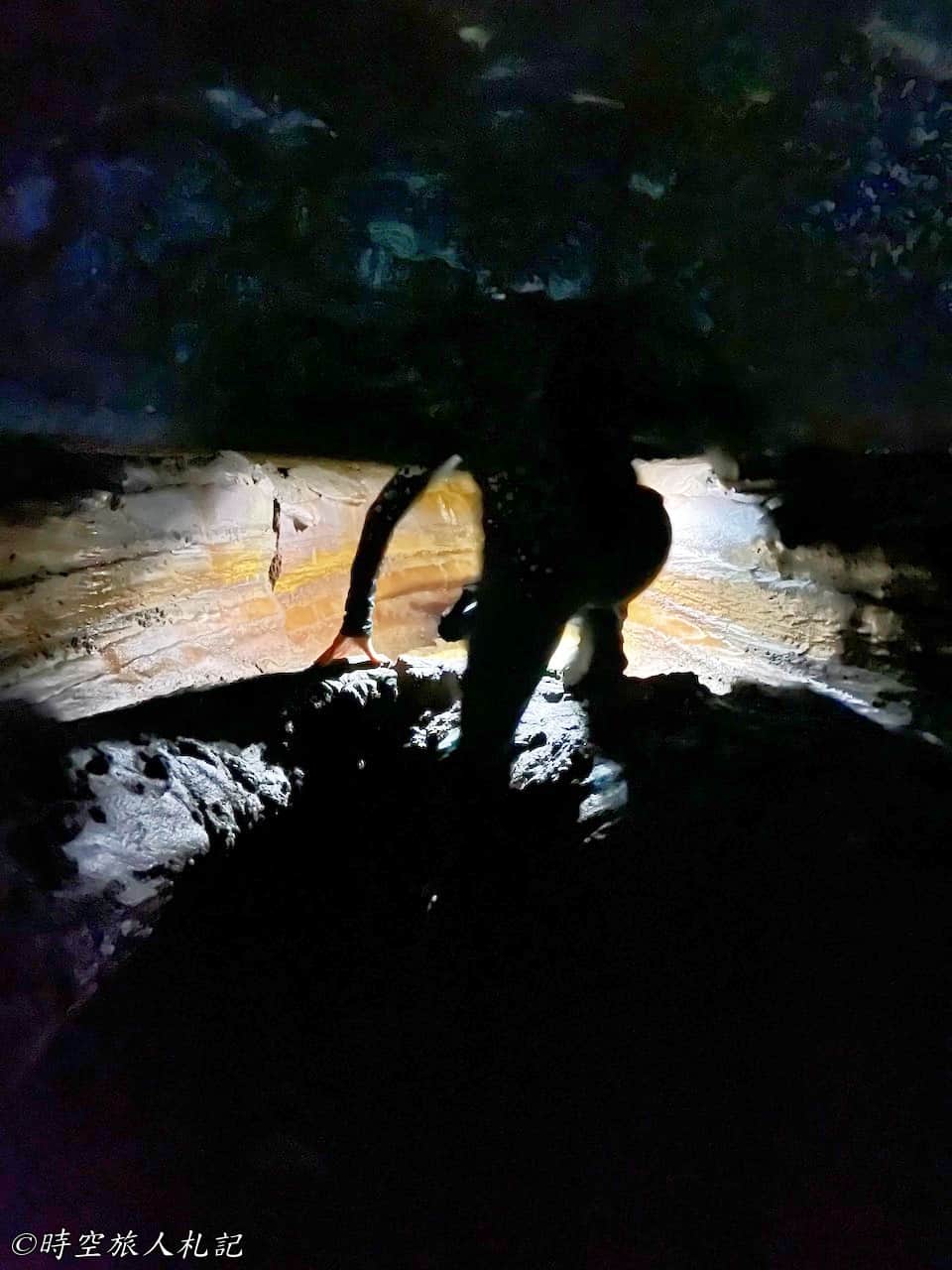
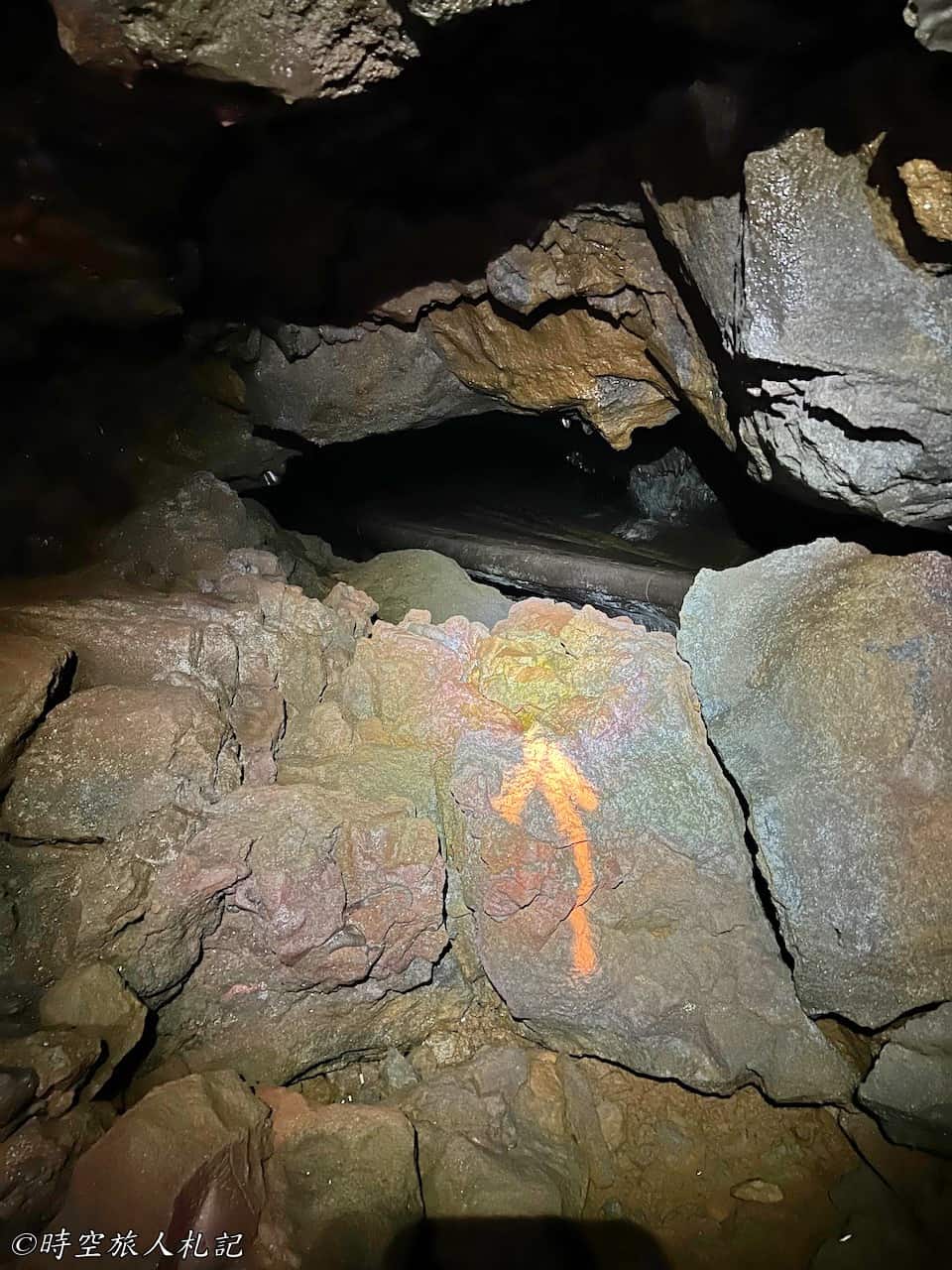
Inside, it was completely dark, with zero visibility; you couldn't even see your own hand in front of your face. If you plan to explore inside, remember to bring a headlamp as it's essential. As you progress deeper, the climbing becomes increasingly difficult, and towards the end, the sharp rocks can prick you, adding an extra thrill. At the endpoint, there's a large rock with "stop" written in bright paint. Seeing this indicates it's time to turn back.
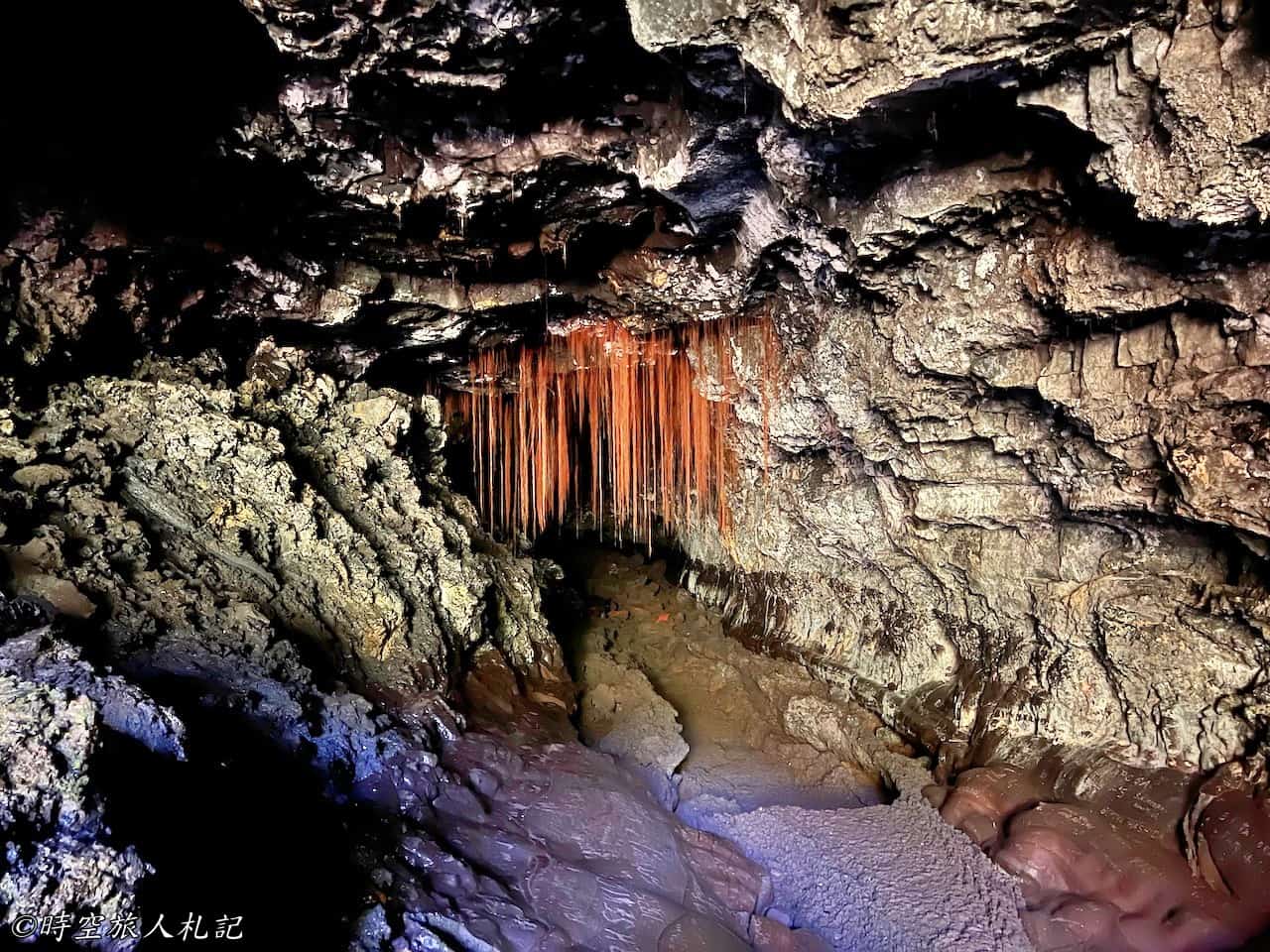

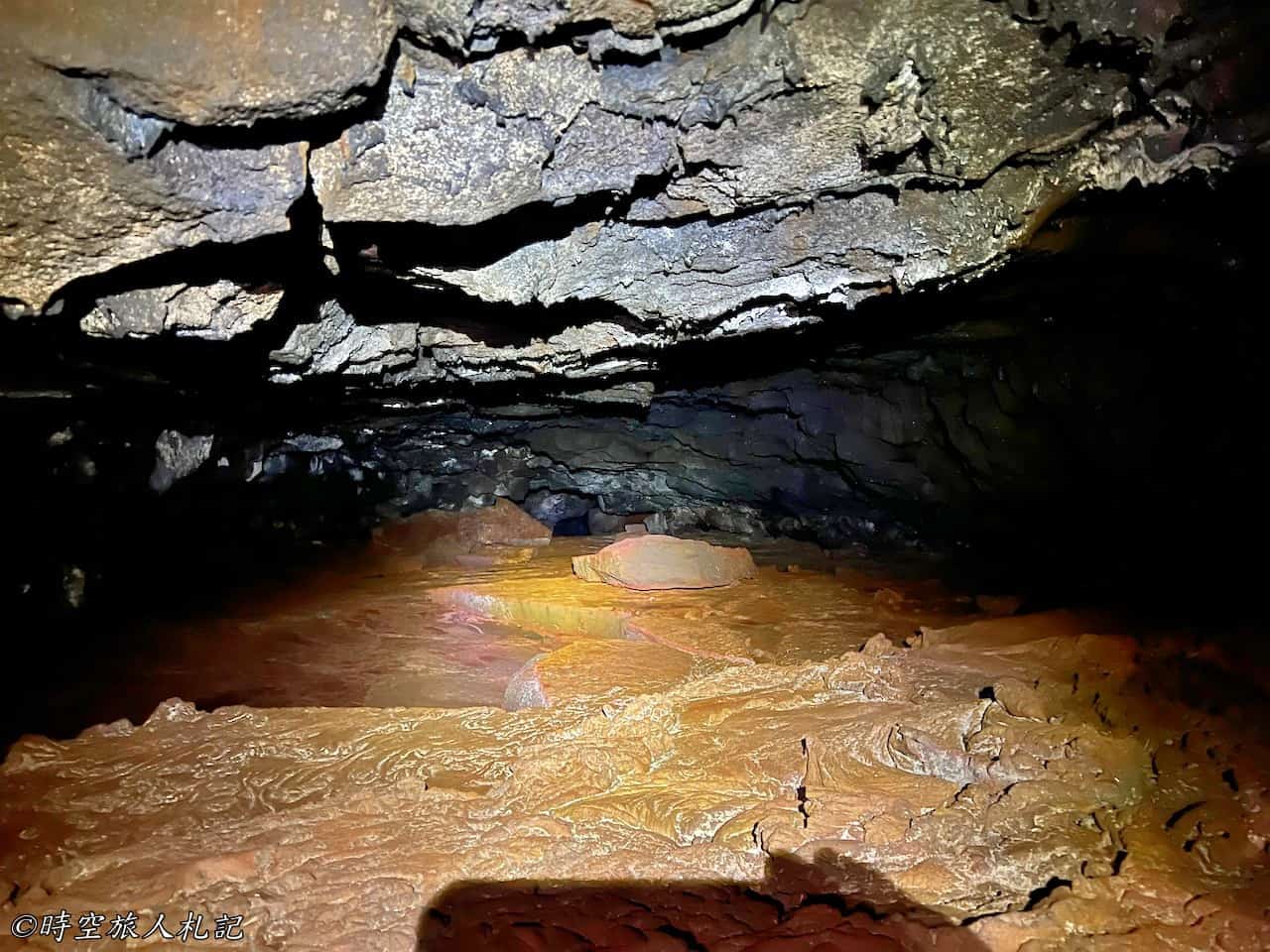
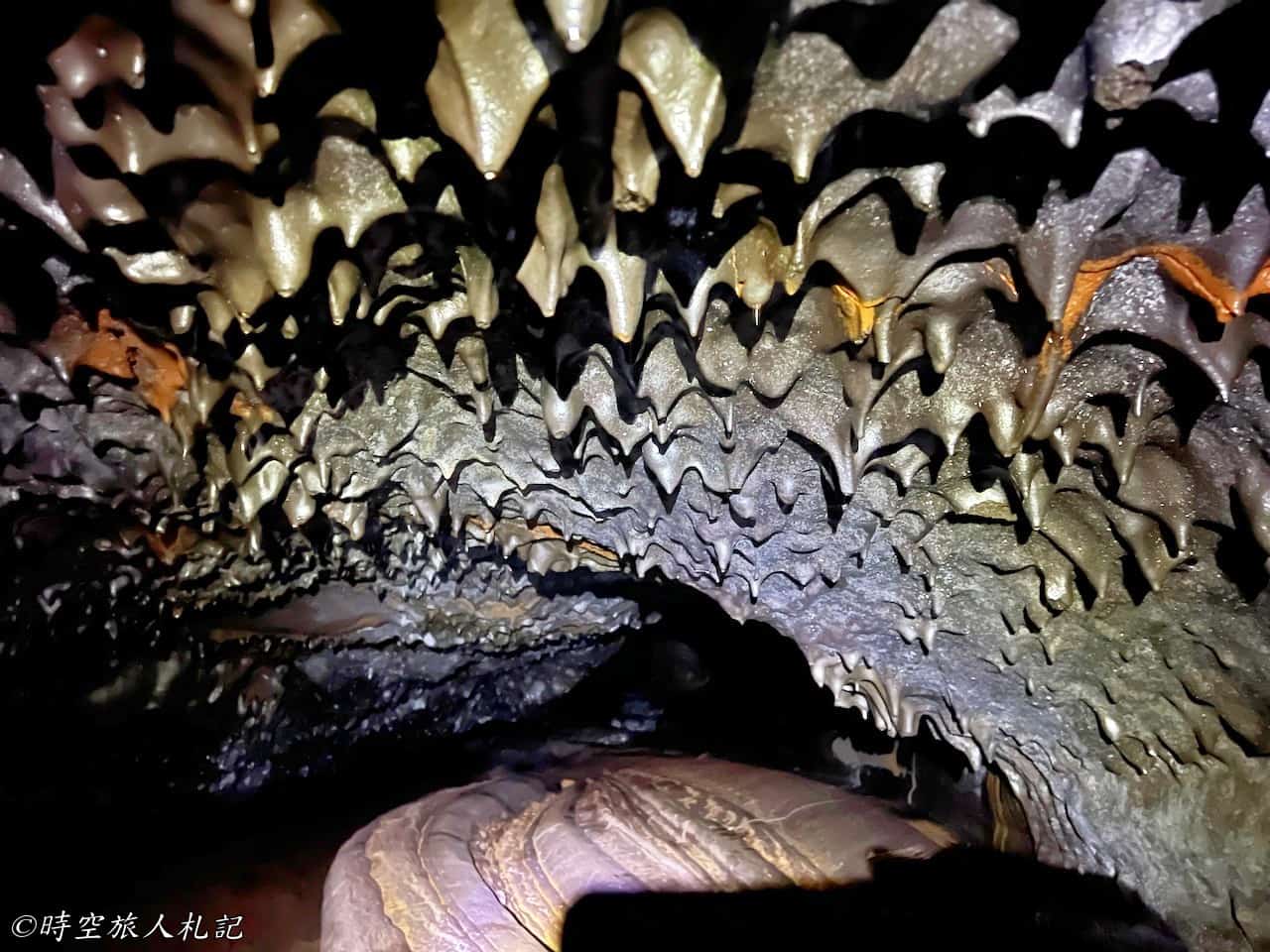


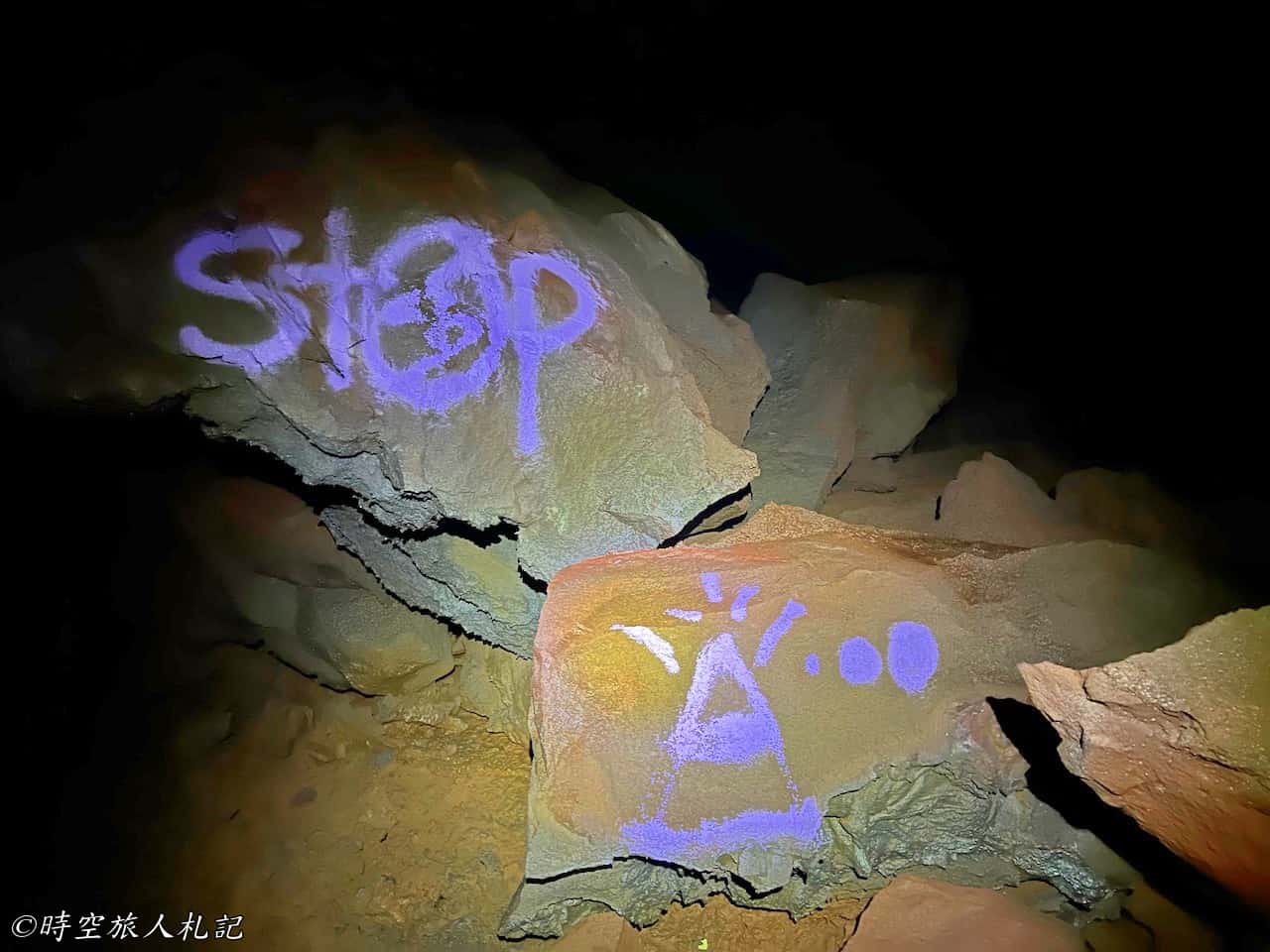

Akaka Falls State Park
From Hilo, heading north, you can reach Akaka Falls, one of the most visited state parks near Hilo. The waterfall itself is 100 feet long, but there's a five-dollar entrance fee per person to access it. The trail is only 0.4 miles long, but it's quite steep, making it suitable for hiking enthusiasts.
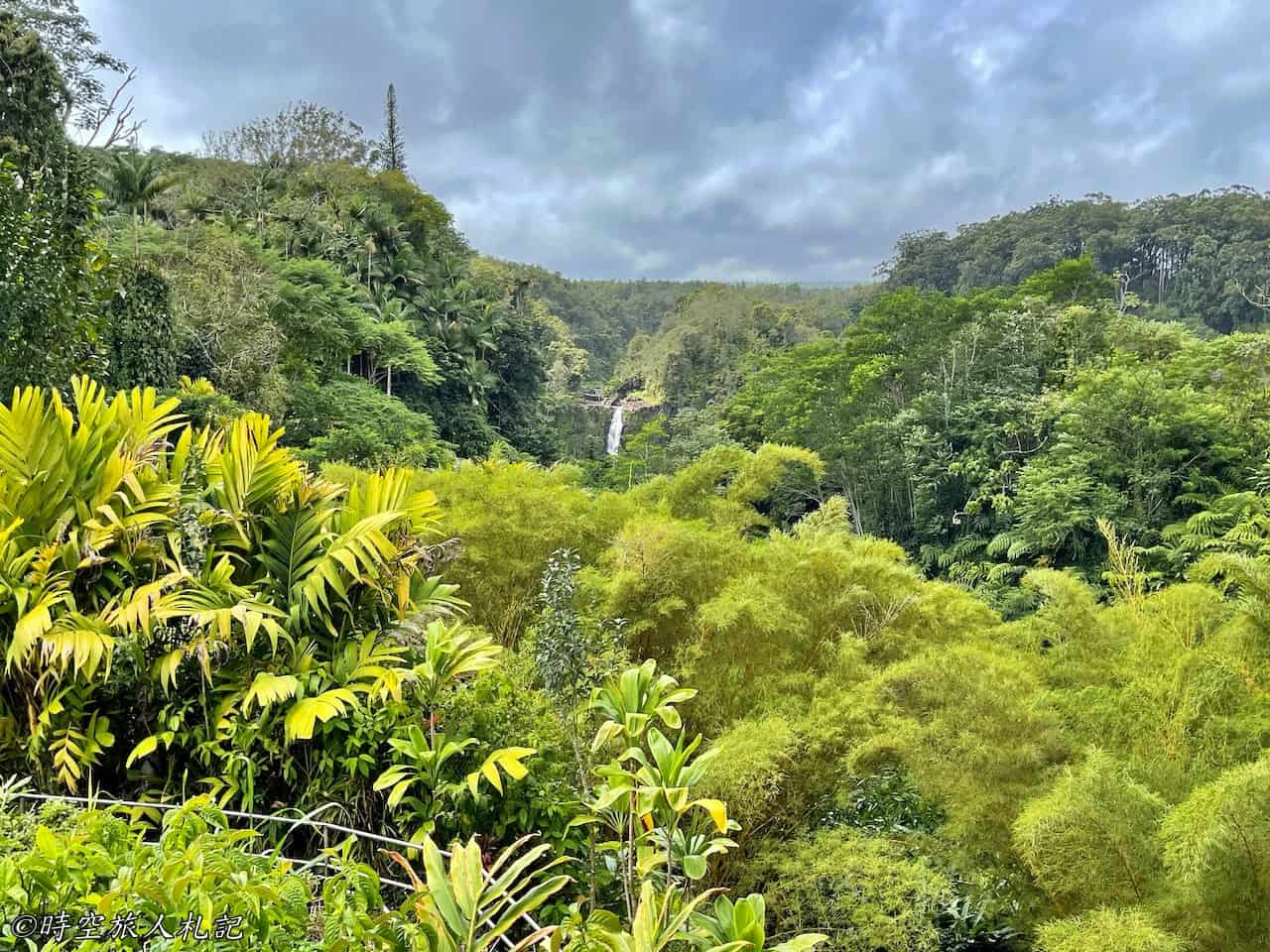
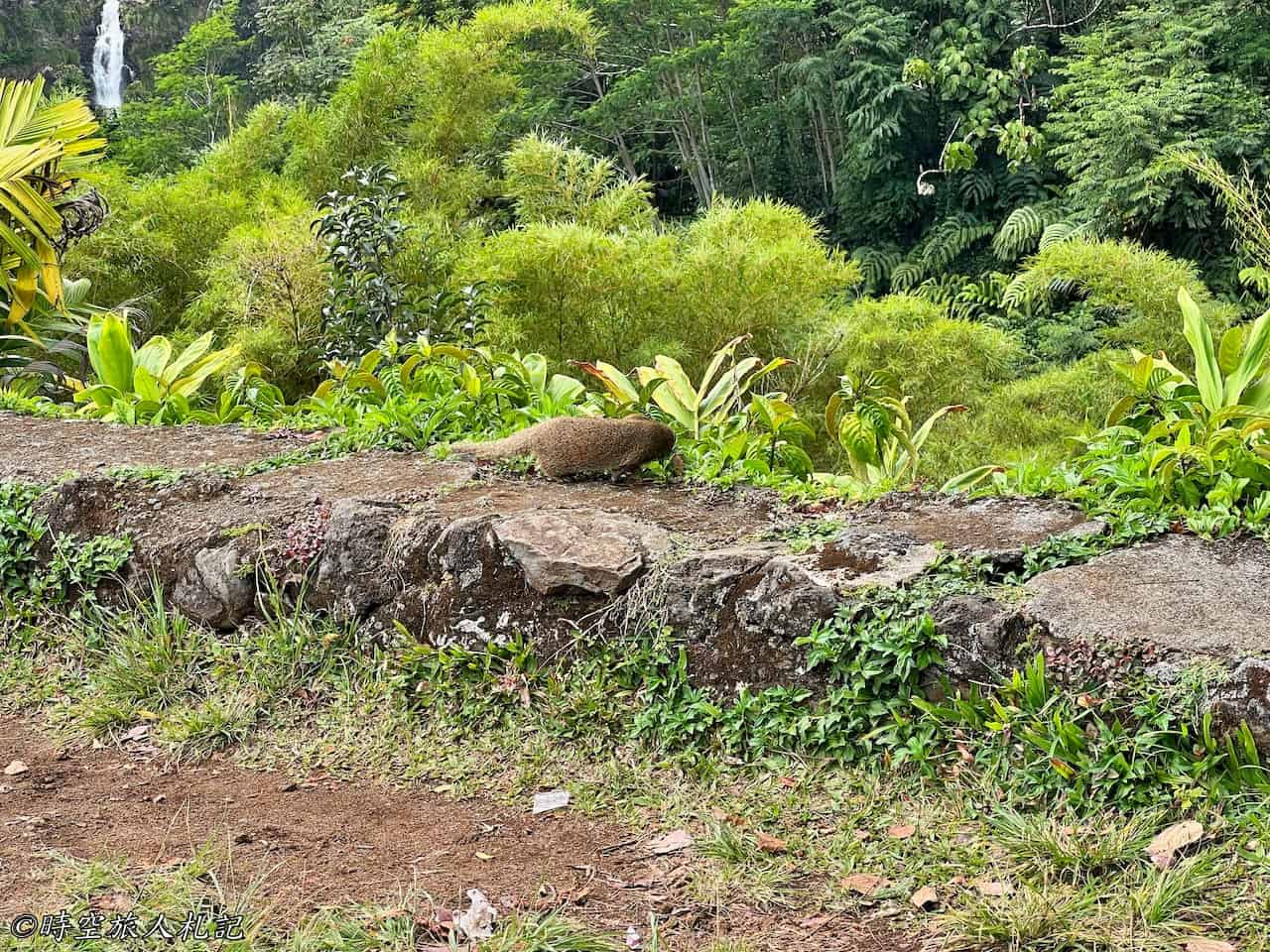
4 miles scenic drive
If you drive north on the Hawaii Belt Road, around mile marker 7-8, you'll see a large sign that says Scenic Drive. This scenic route is a branching road leading towards the sea. Along this road, you'll pass by Onomea Bay, surrounded by beautiful tropical rainforests on both sides. You can enjoy views of both mountains and sea while heading towards the famous Tropical Botanical Garden on the Big Island.
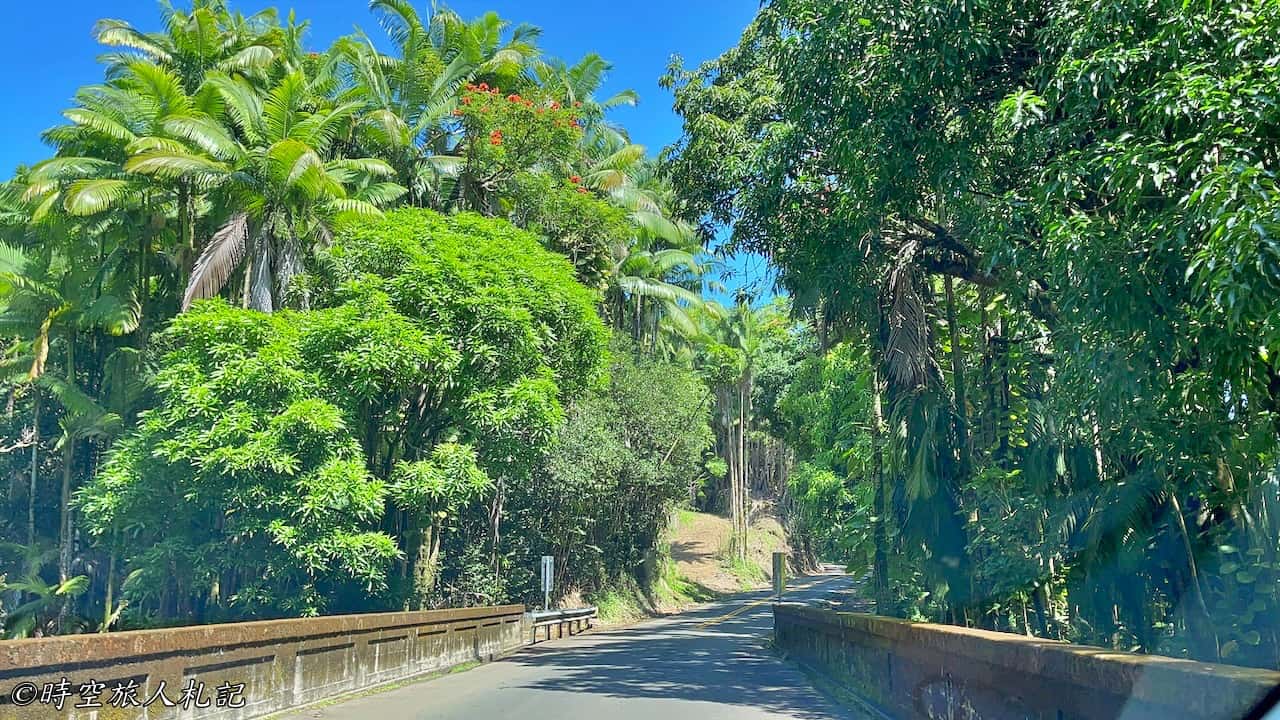
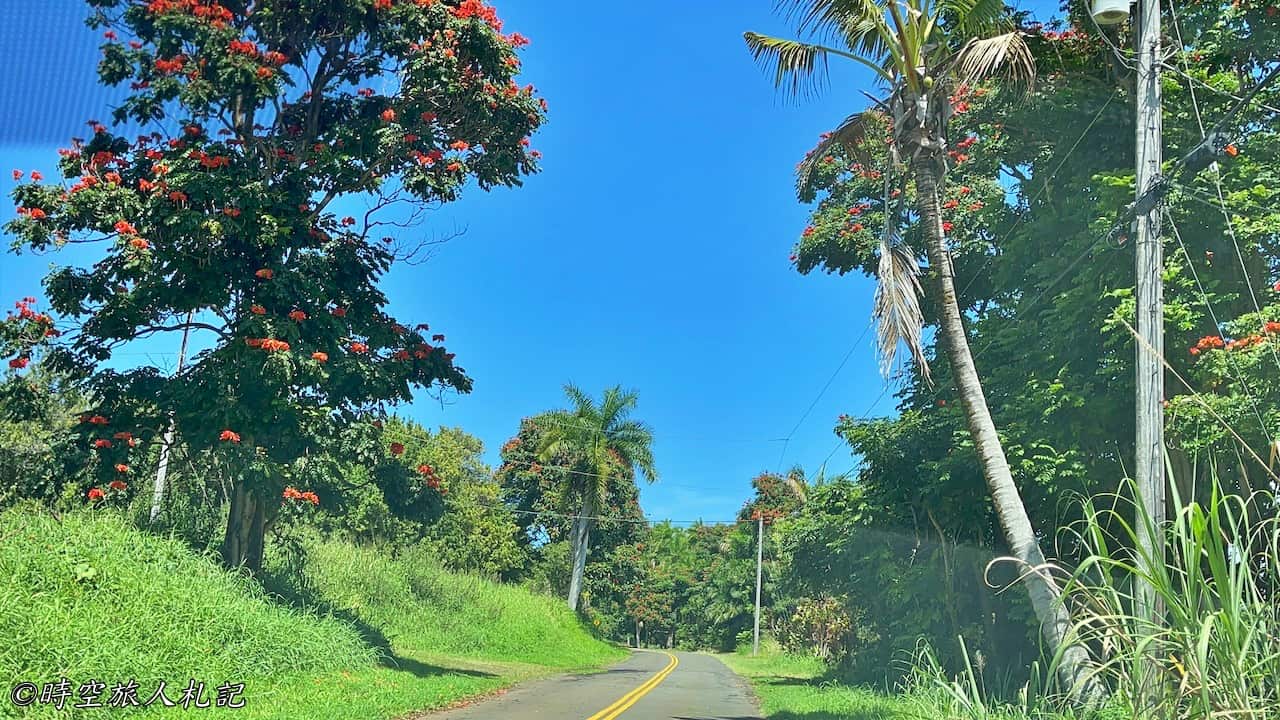
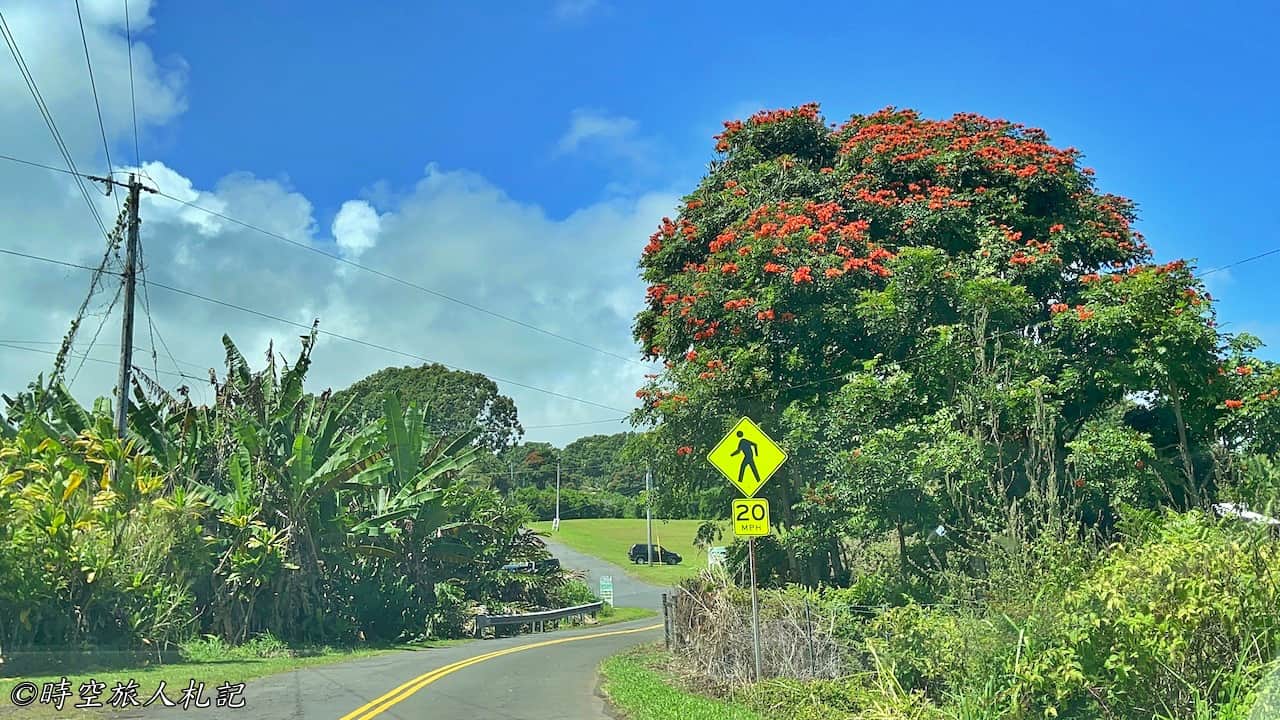
If you don't plan to visit the botanical garden, you might want to take a short walk down to see Onomea Bay from the Onomea Trail trailhead. This trail is also quite beautiful.
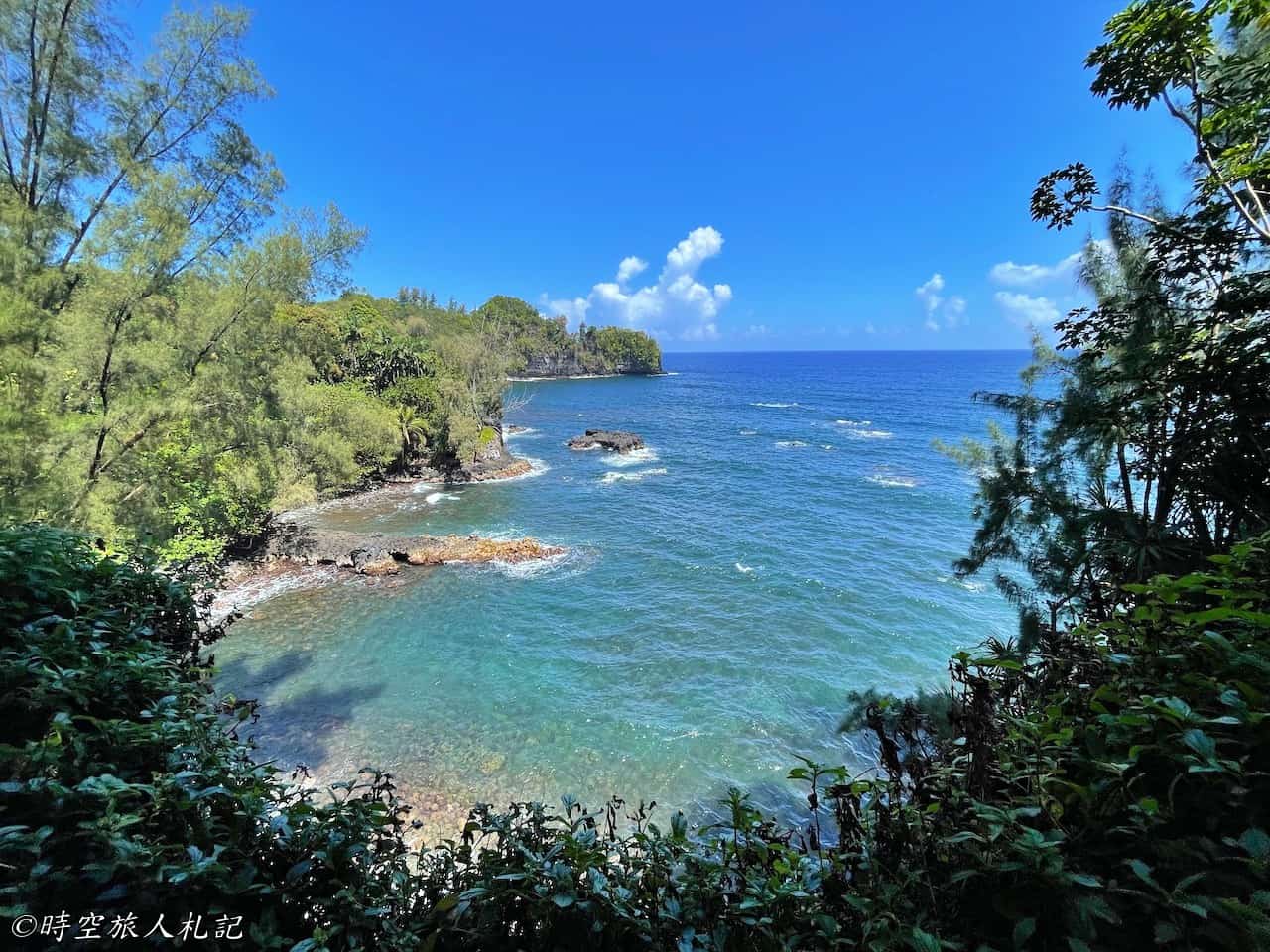
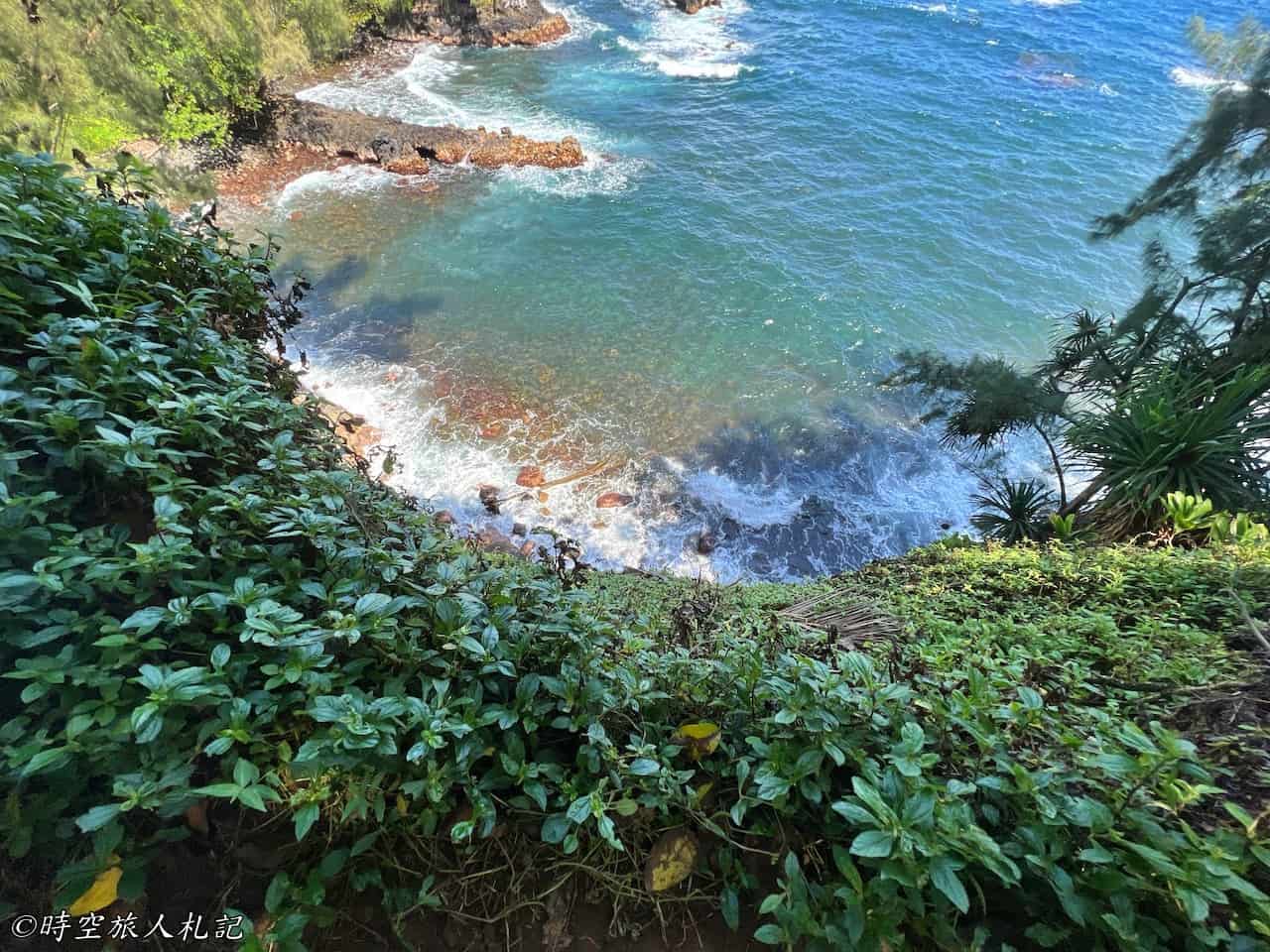
☕ Enjoying my travel notes?
You can Buy me a coffee to support what I do 🙌
Further reading
- From Volcanoes to Cuisine: 8 Days on Hawaii's Big Island
- Big Island - Kona Travel Guide
- Big Island - Kohala Coast Travel Guide | Waikoloa Village | Puukohola Heiau | Hapuna Beach | Lapakahi State Park
- What to Do in Hilo? A Two-Day Itinerary for Exploring the East Side of the Big Island
- Hawaii Volcanoes National Park 2 Days Travel Guide
- Big Island Hotel Recommendations | Budget-Friendly Accommodation Review
- 【Hawaii Big Island】Food Adventures on the Big Island | What to Eat Around the Island? | 18 Restaurants and Snack Bars on the Big Island